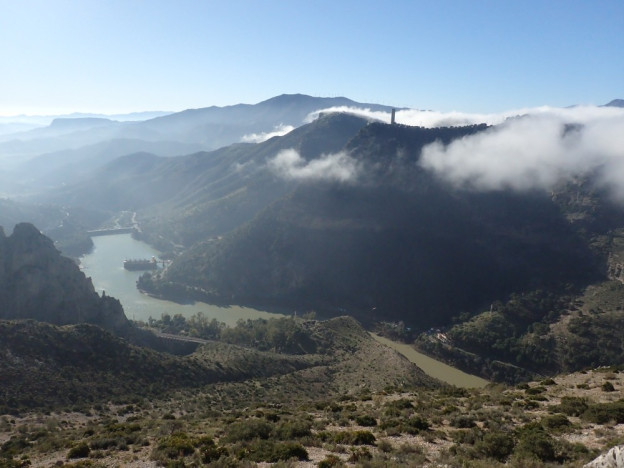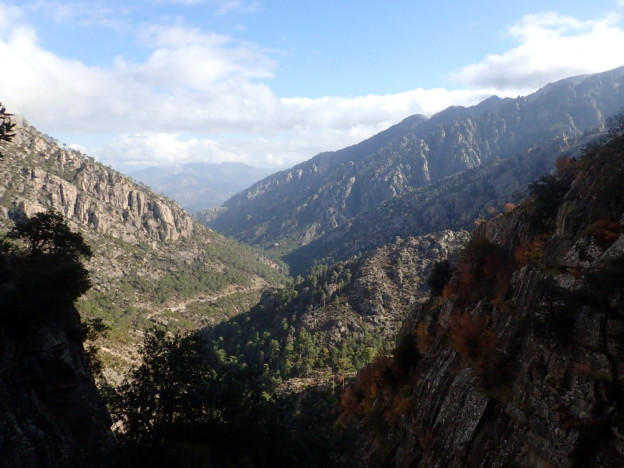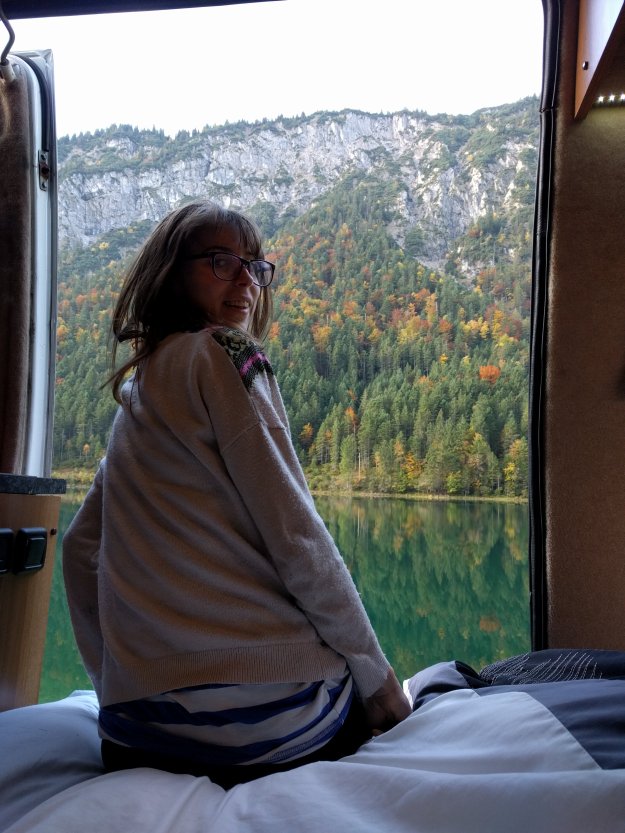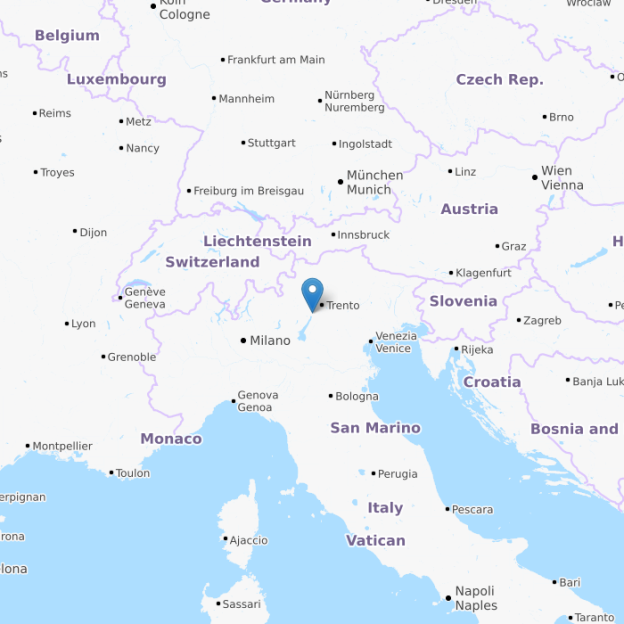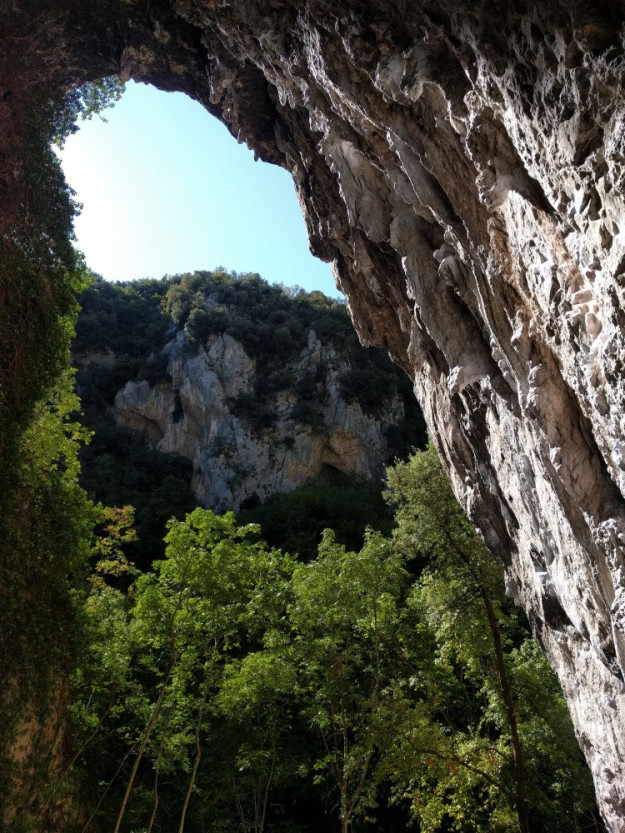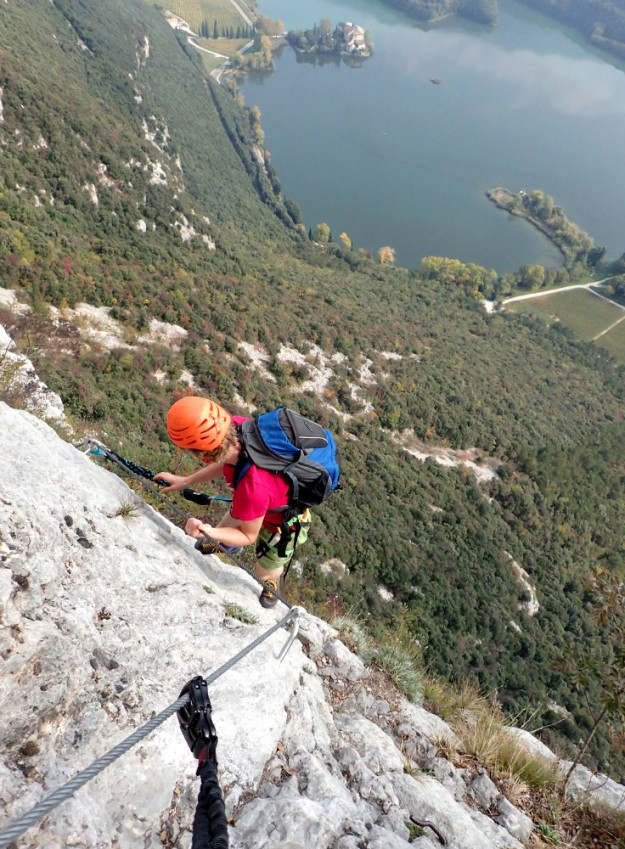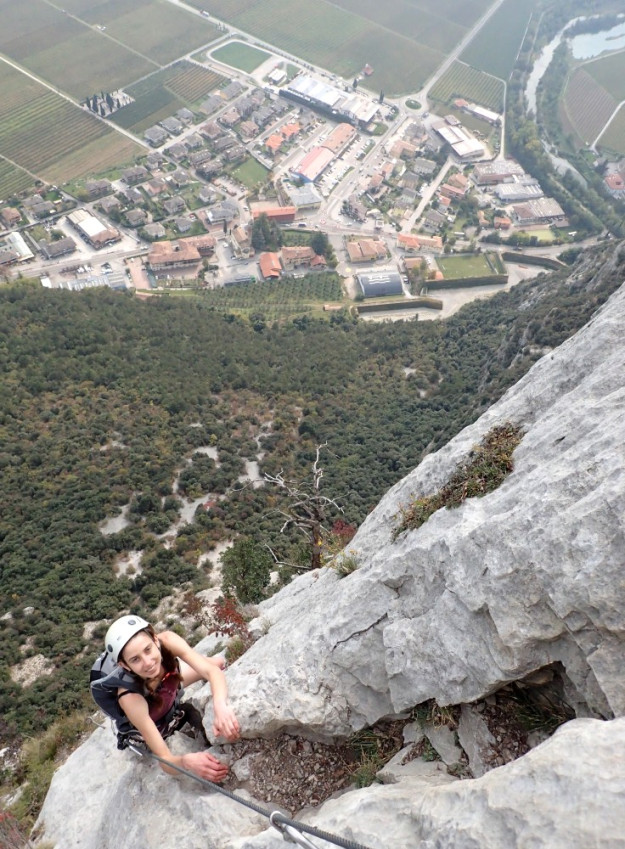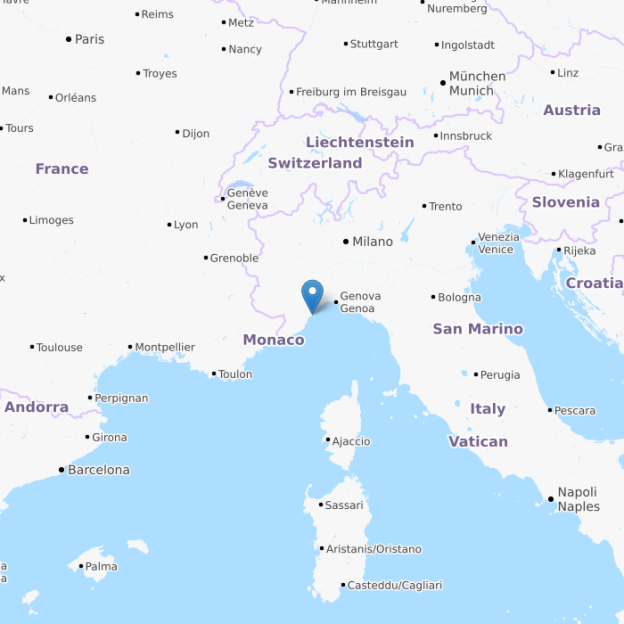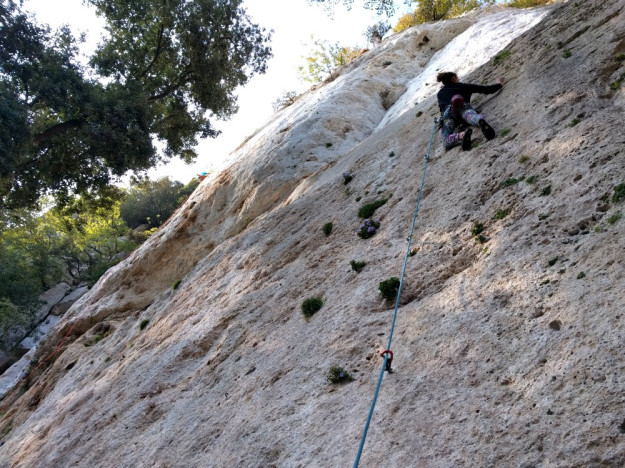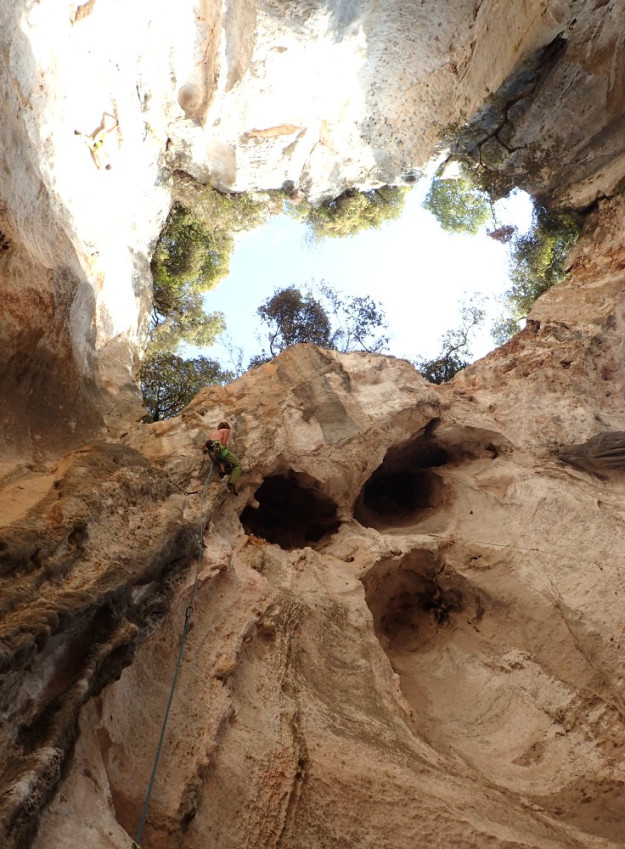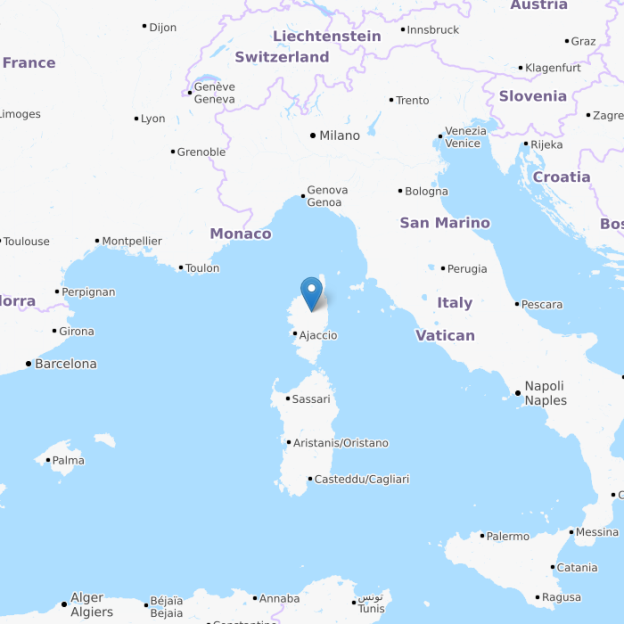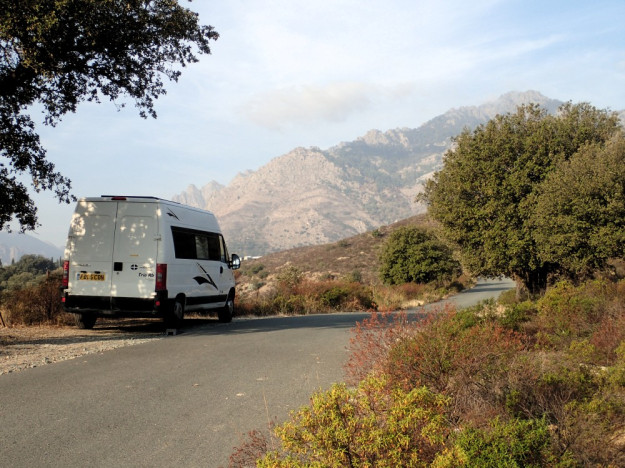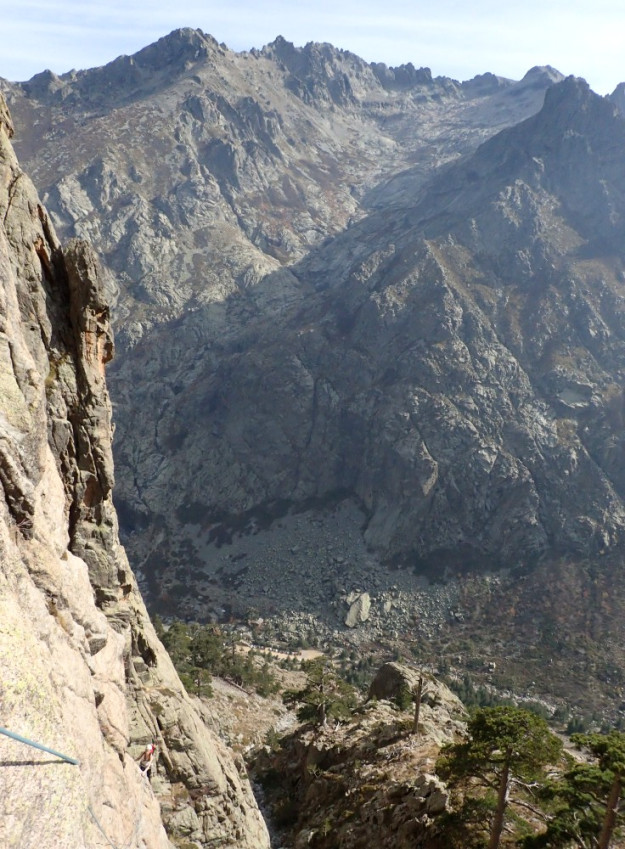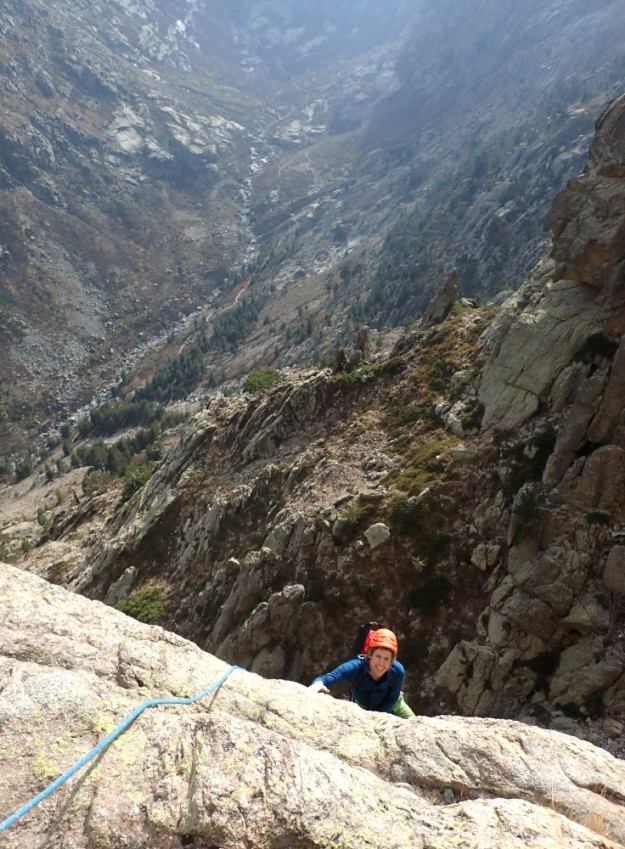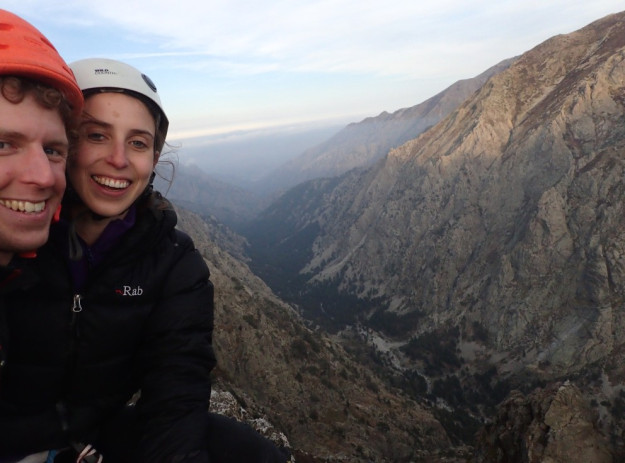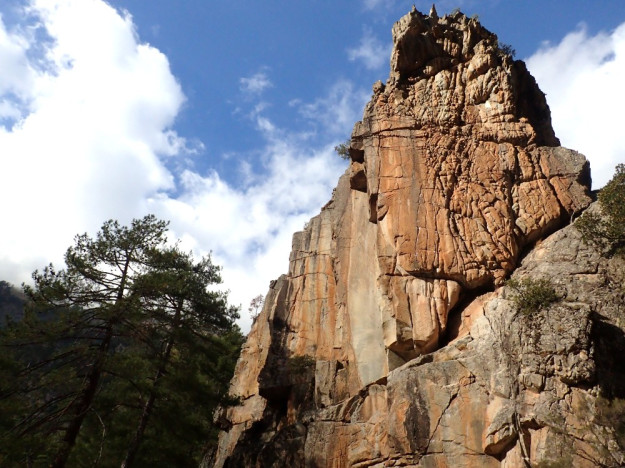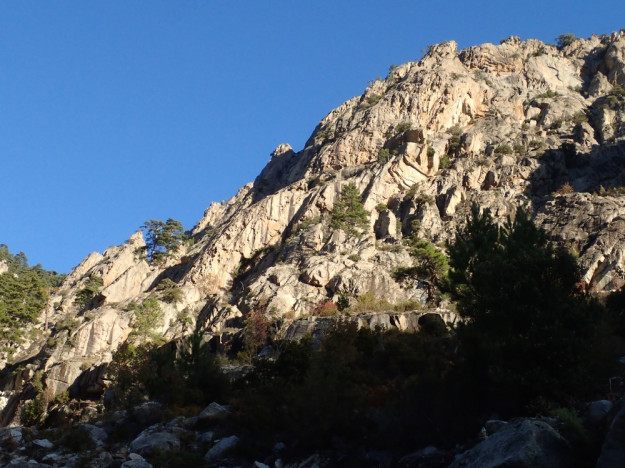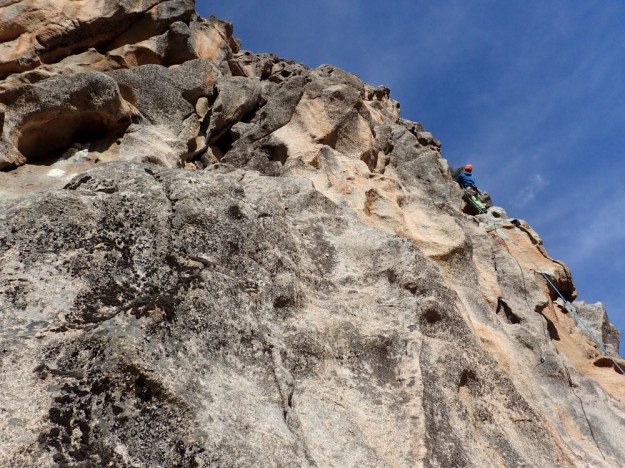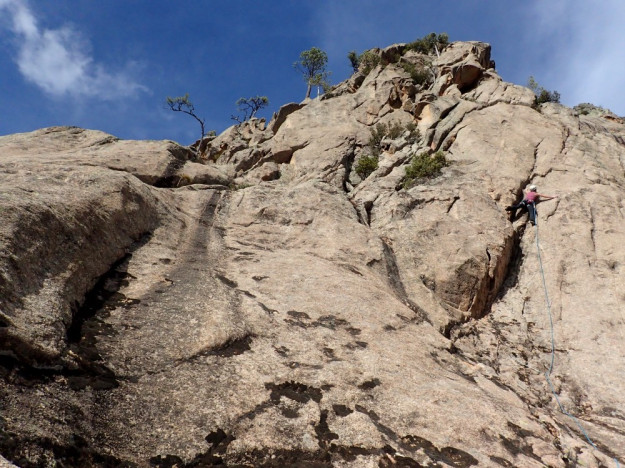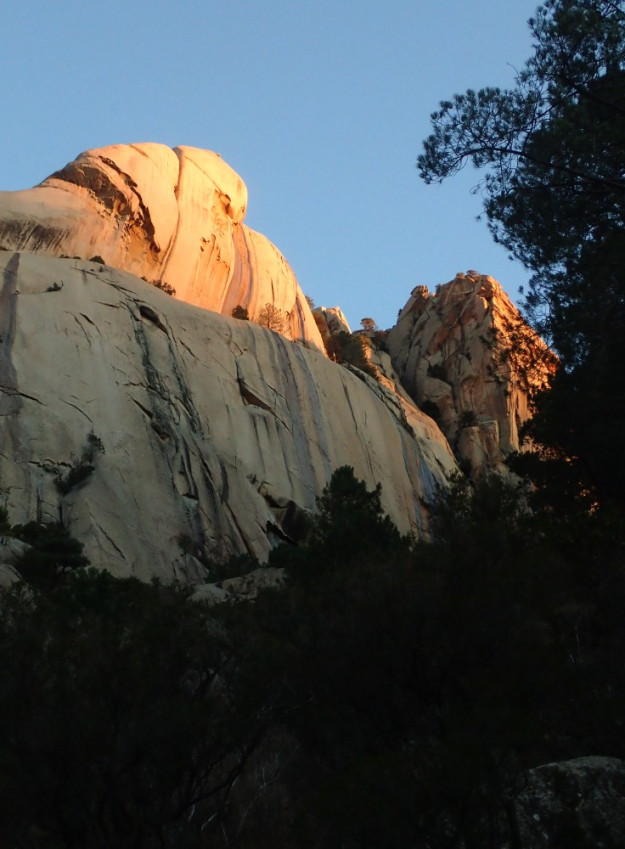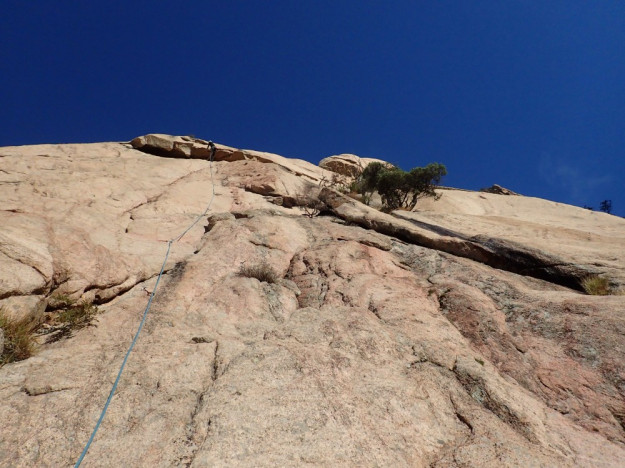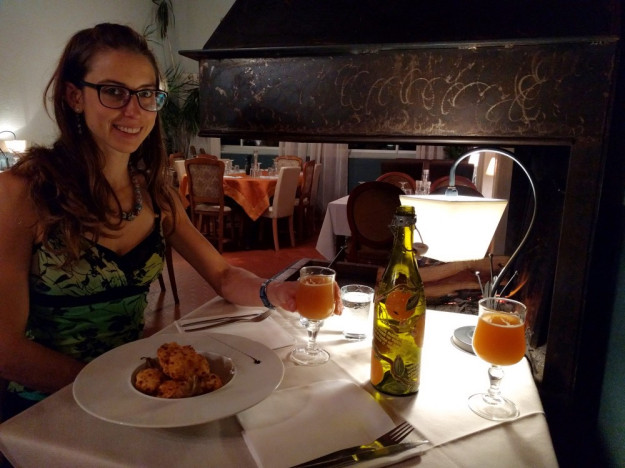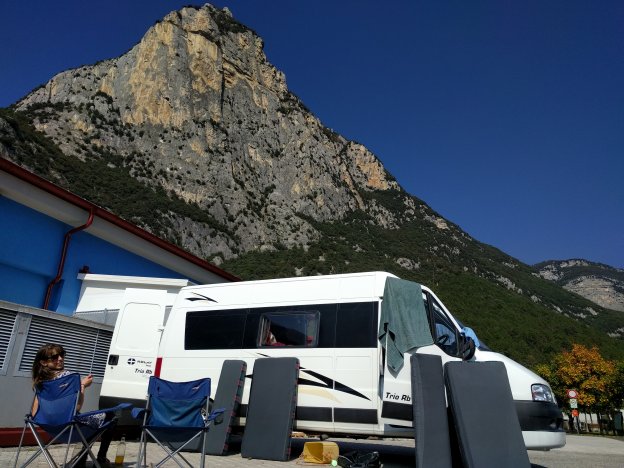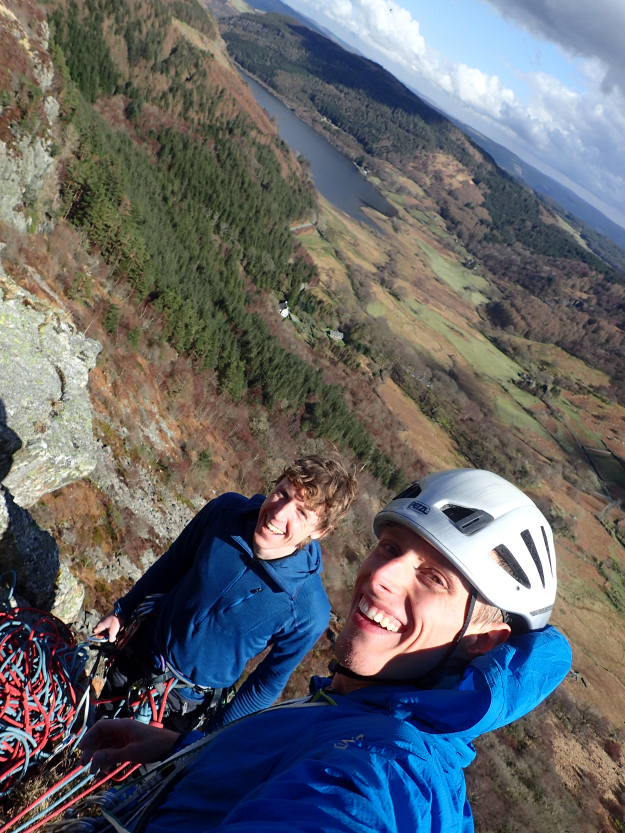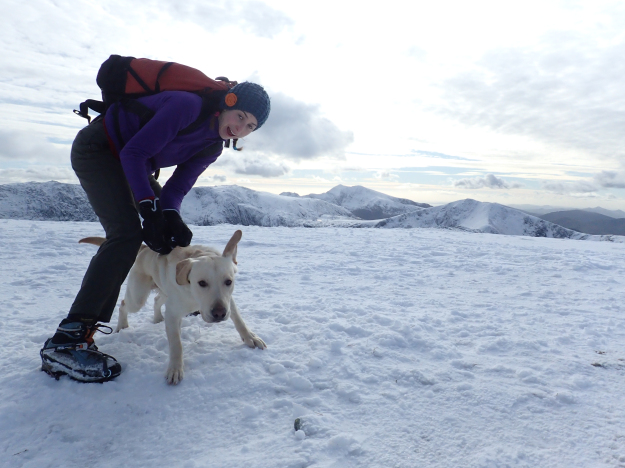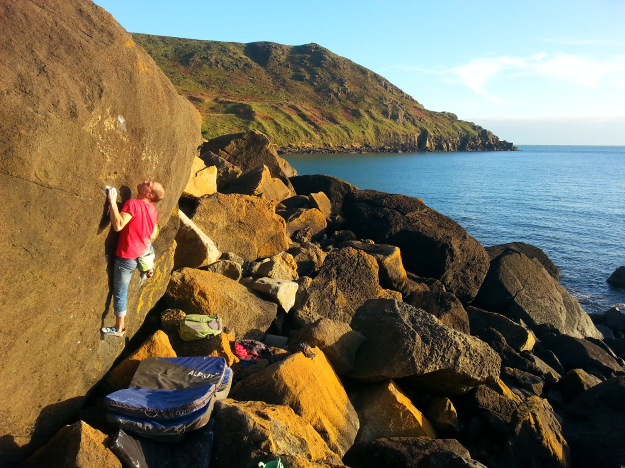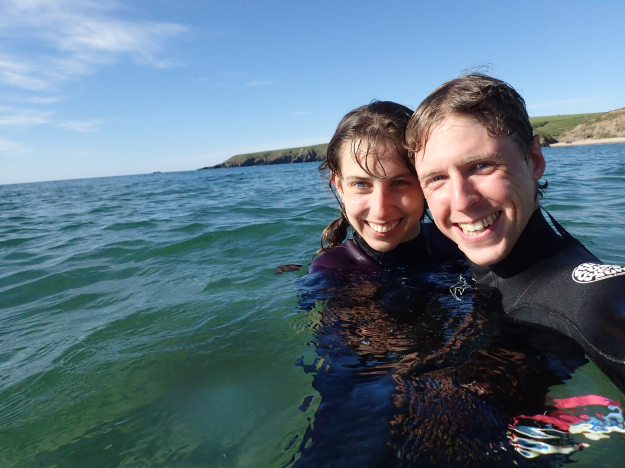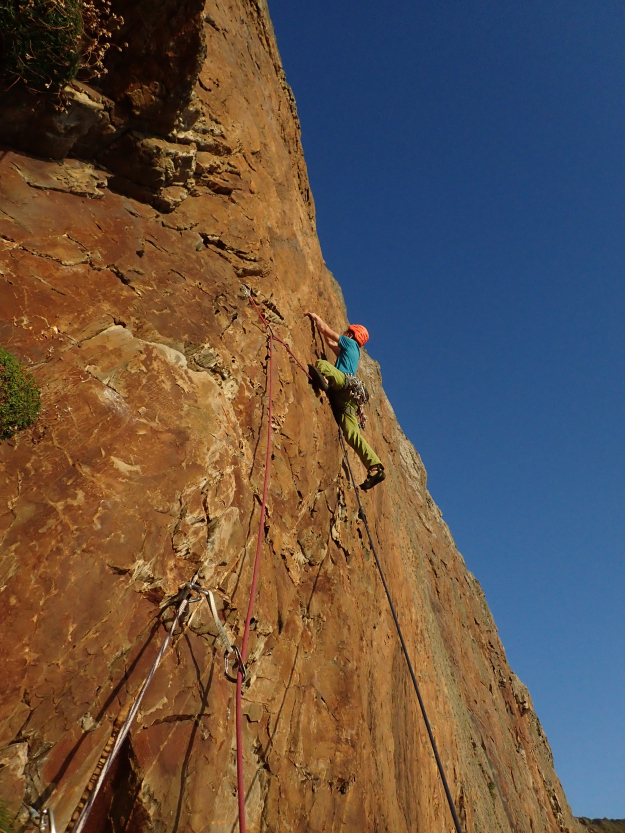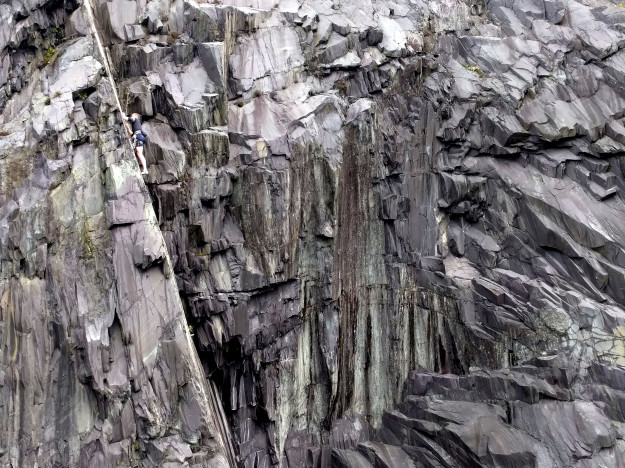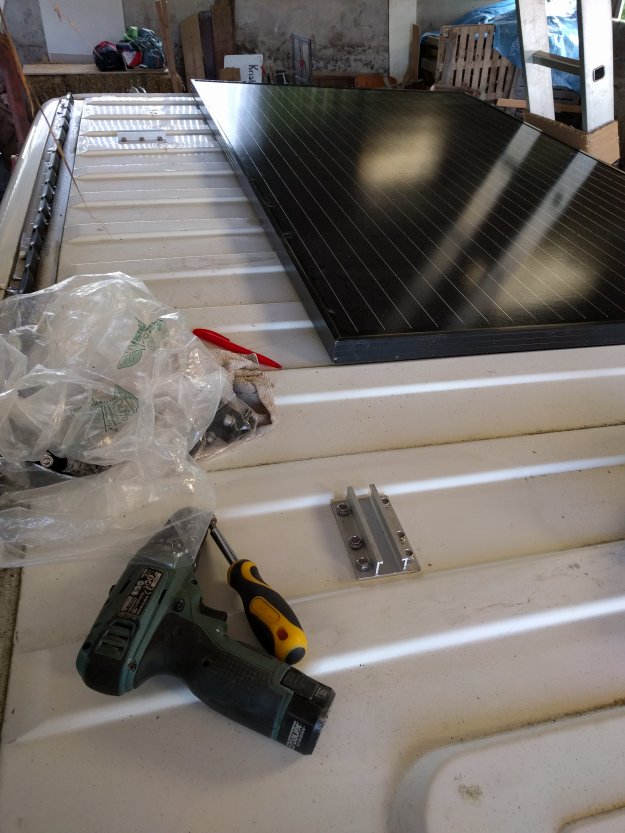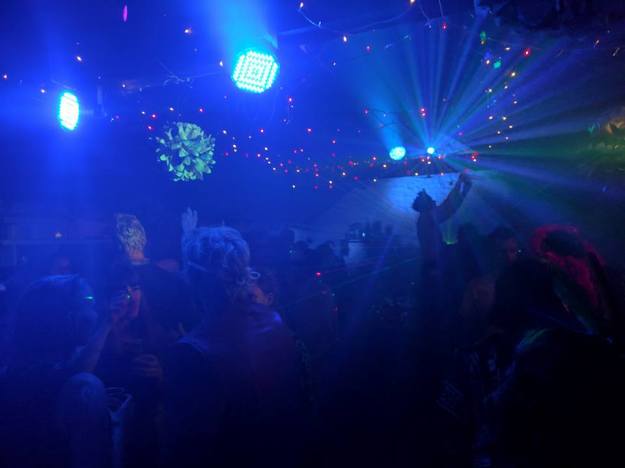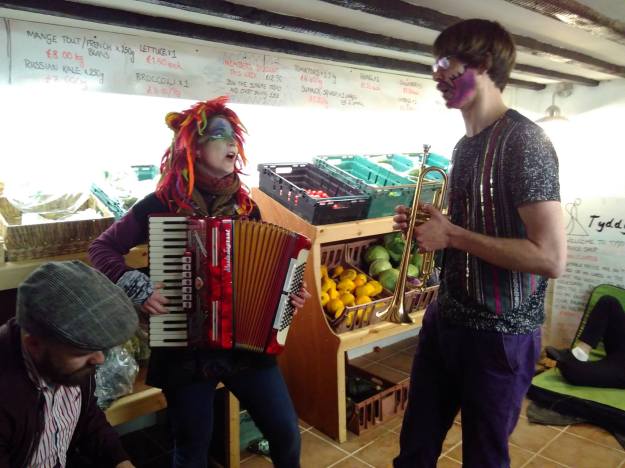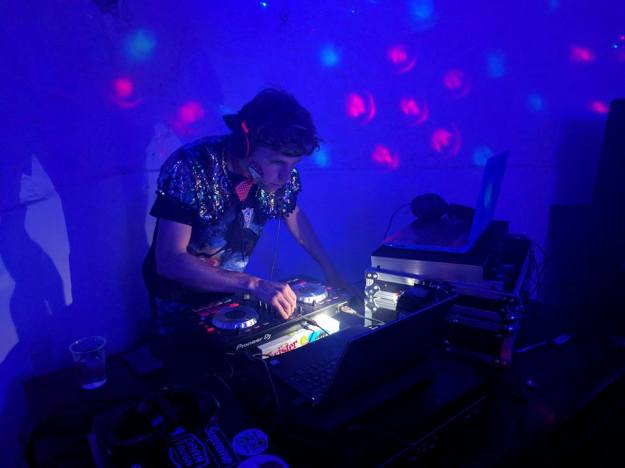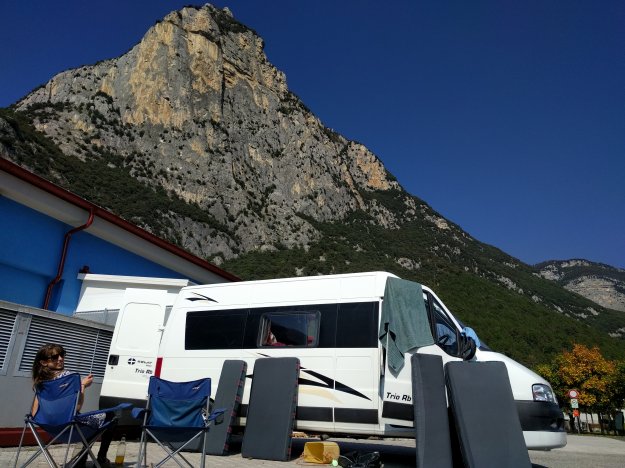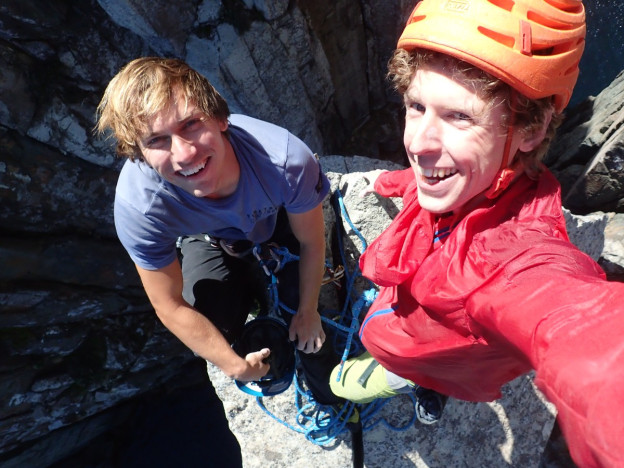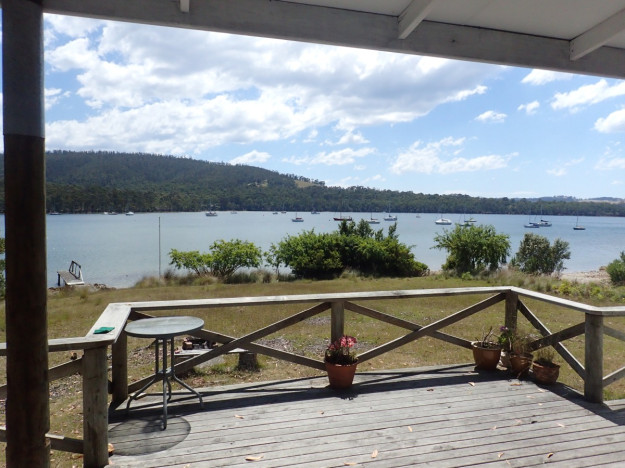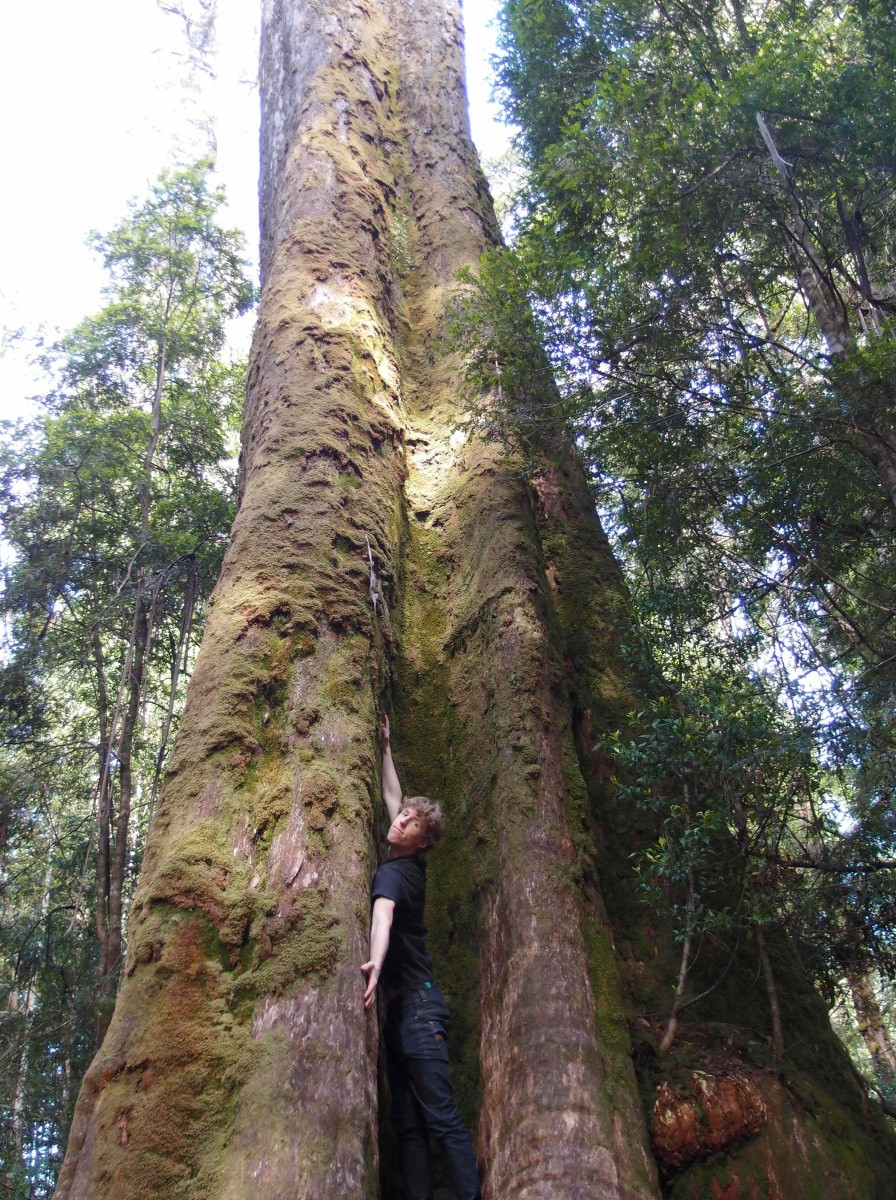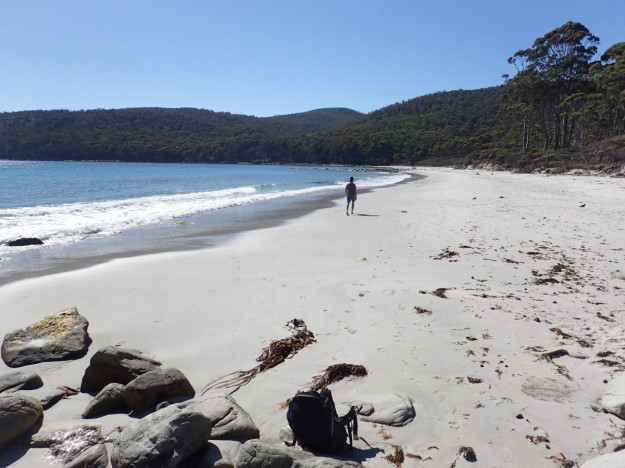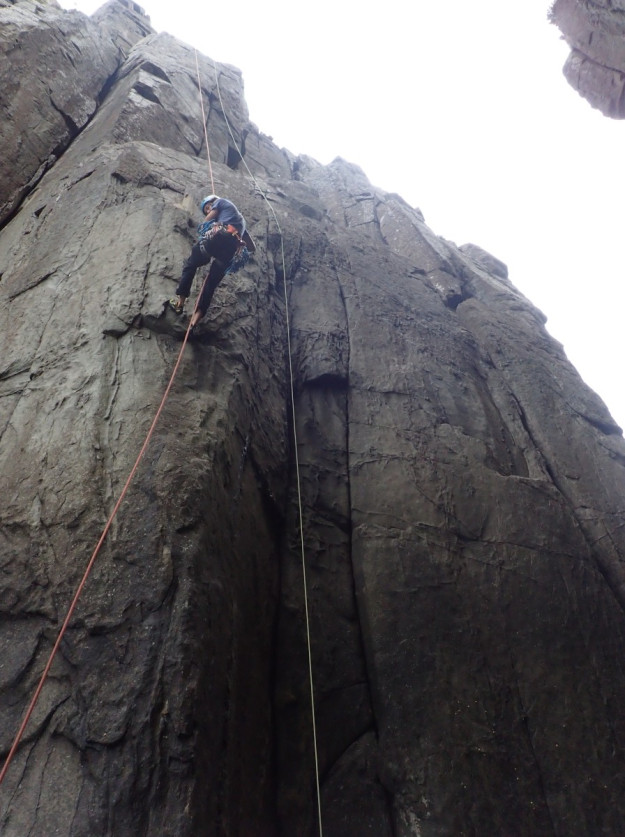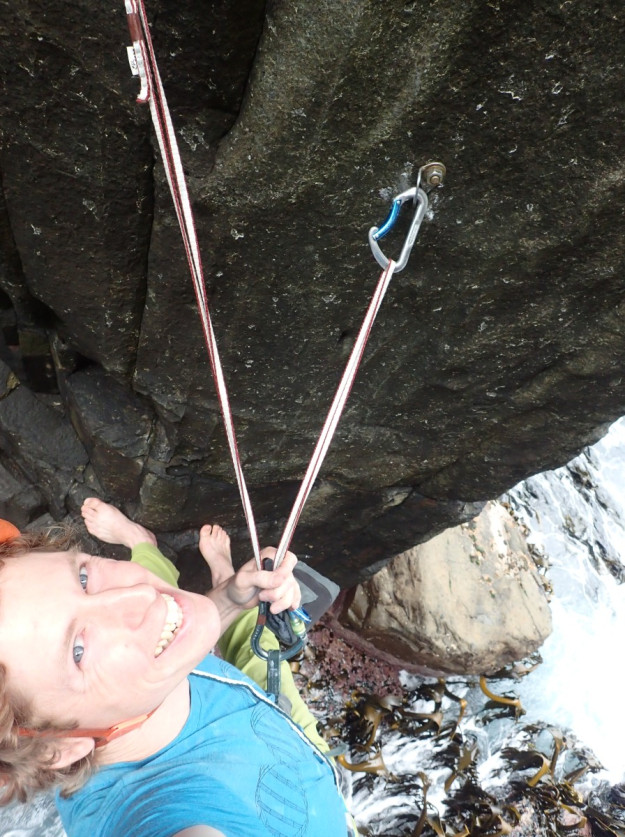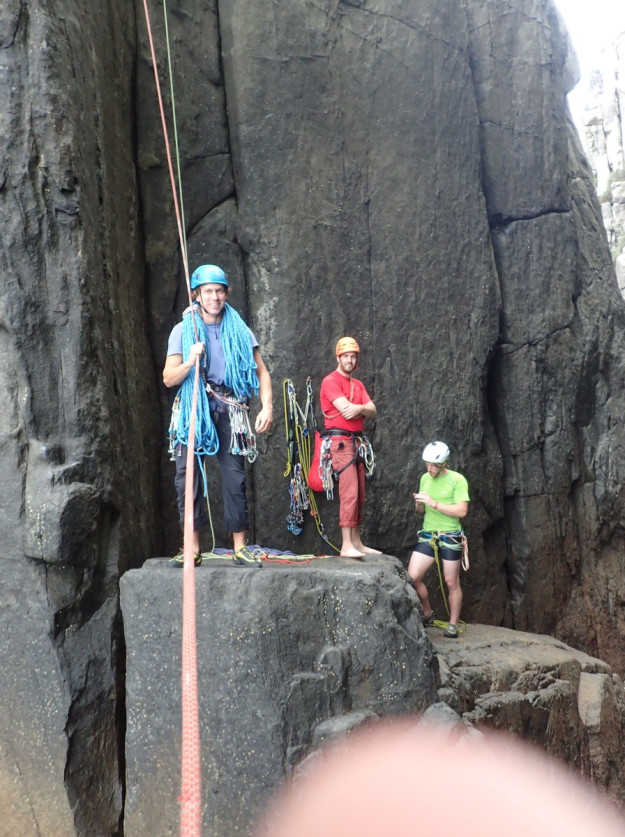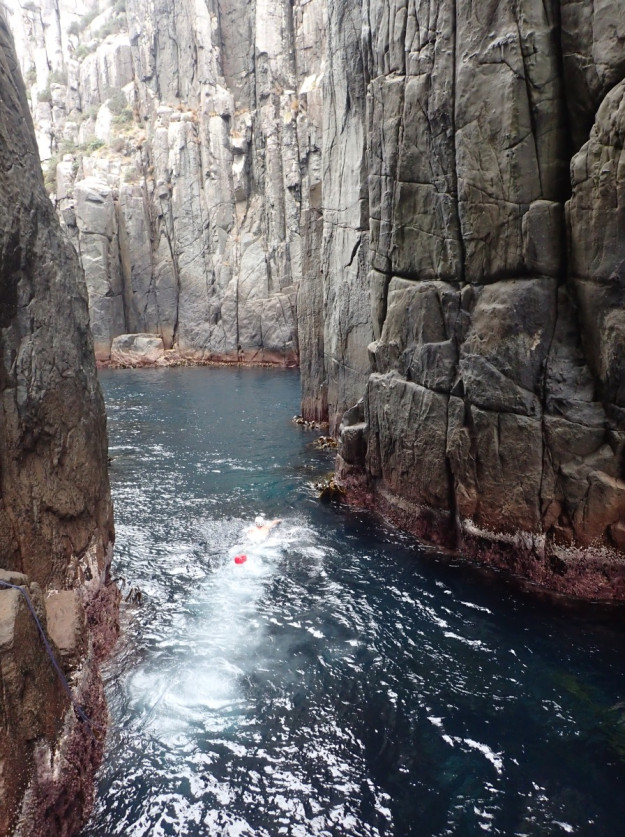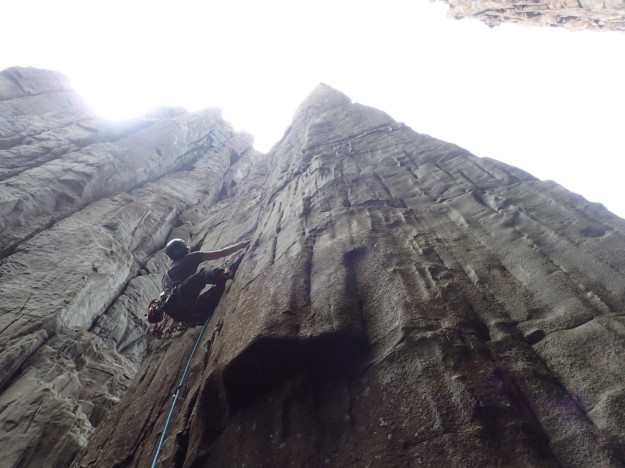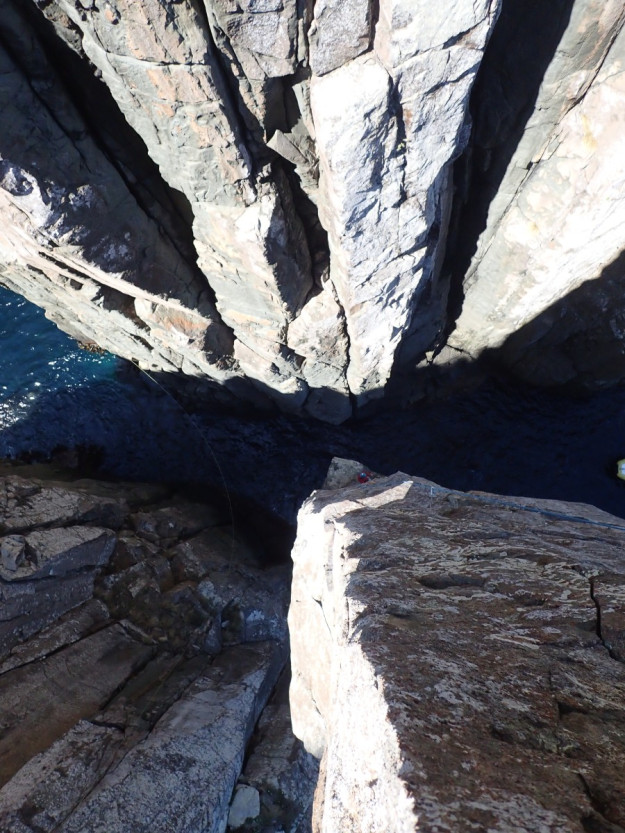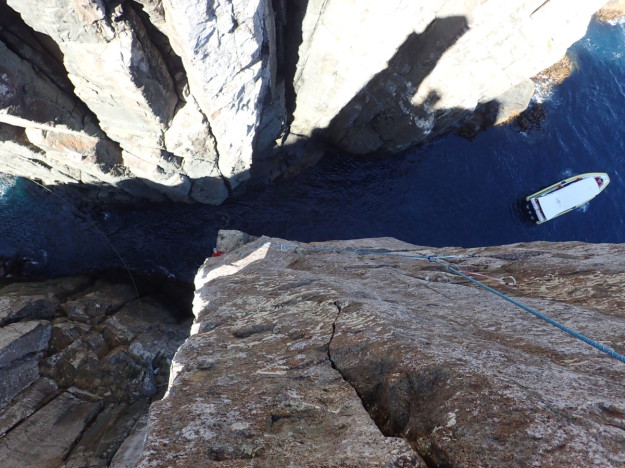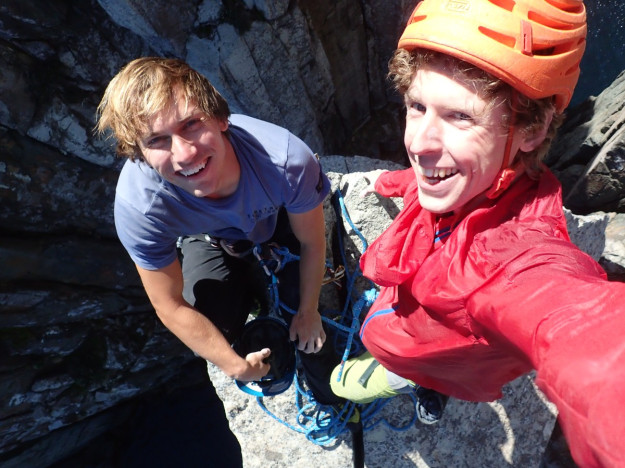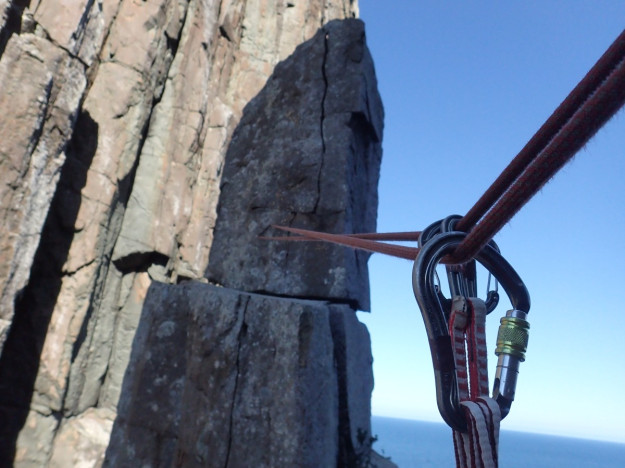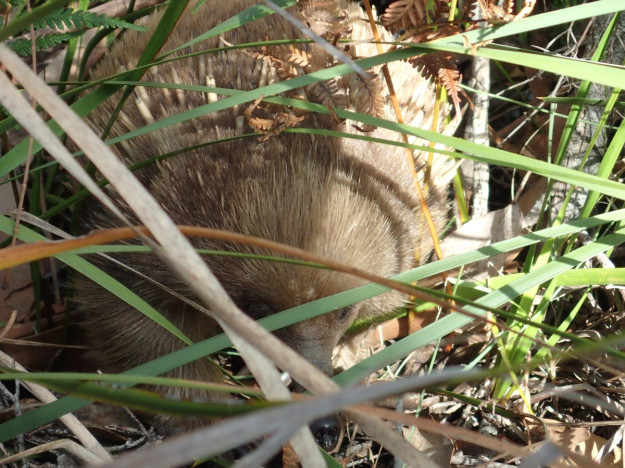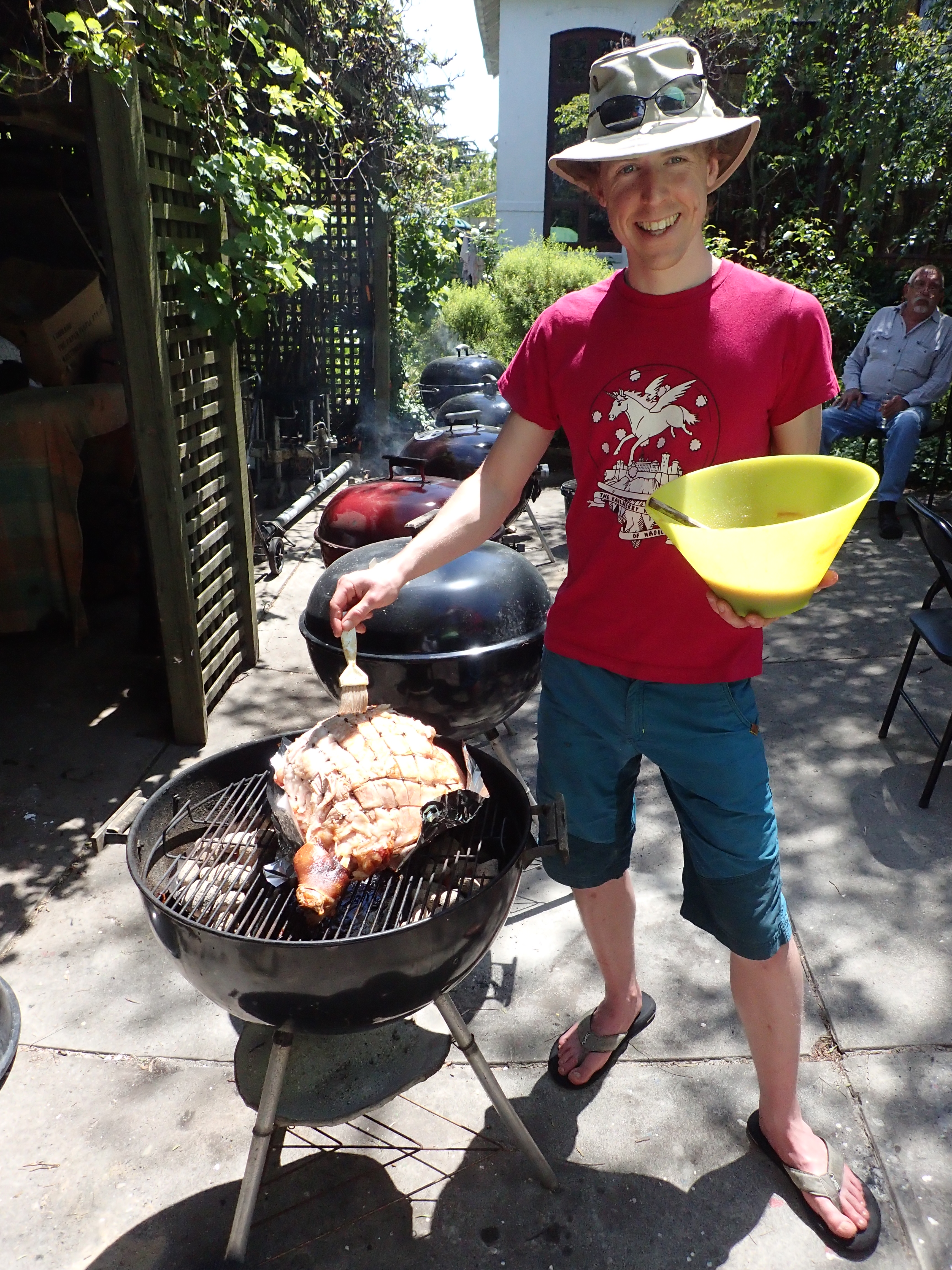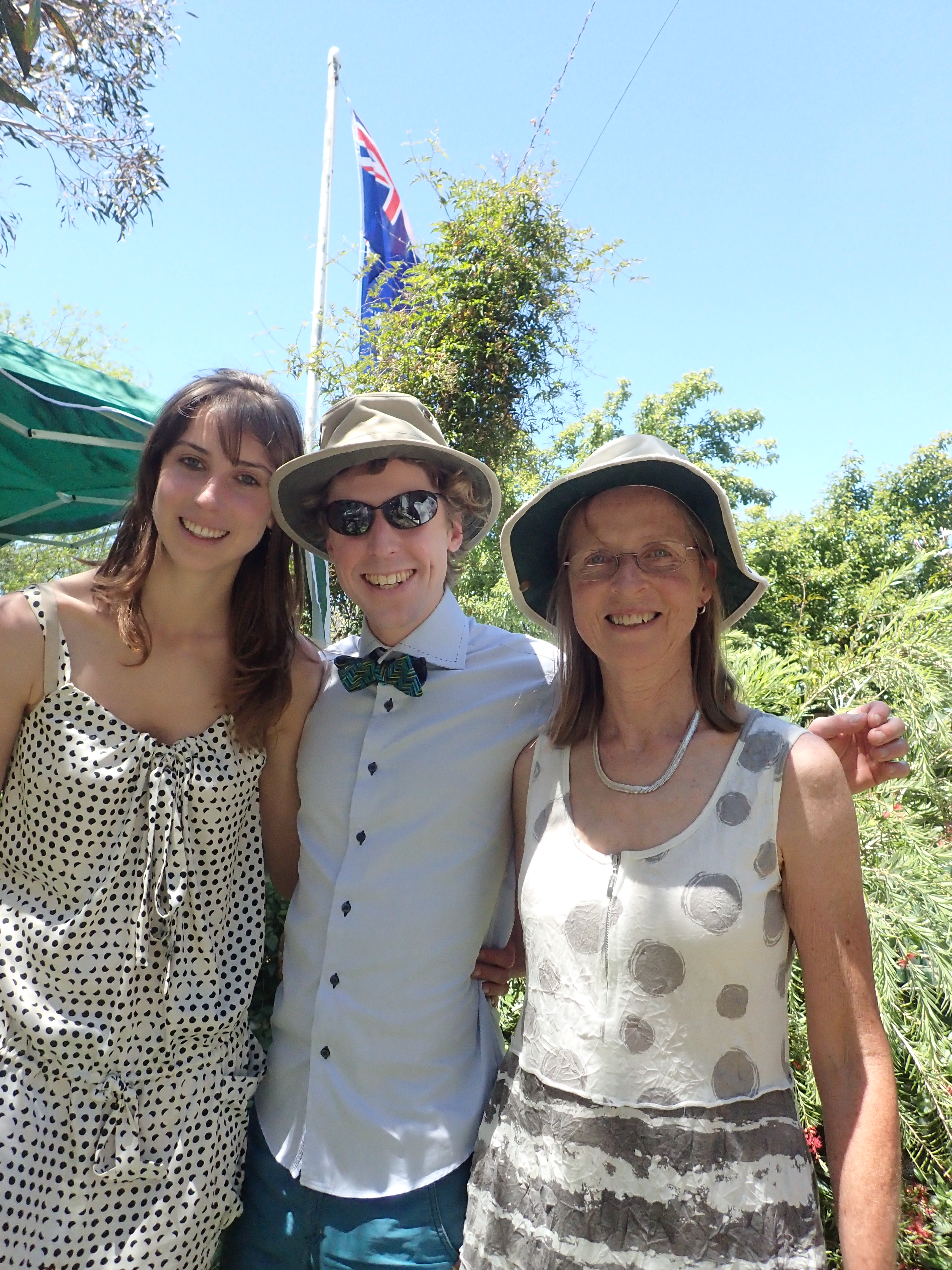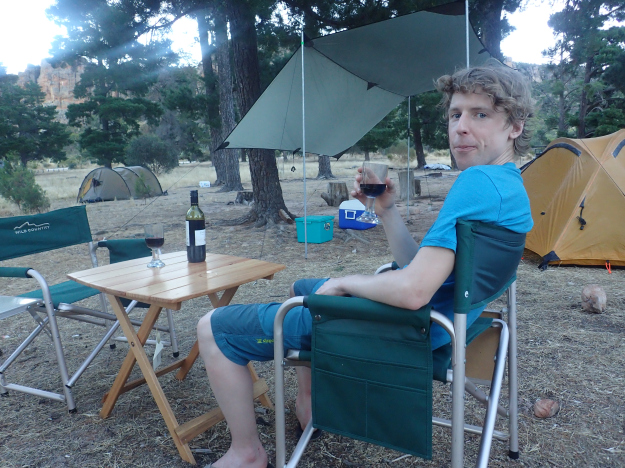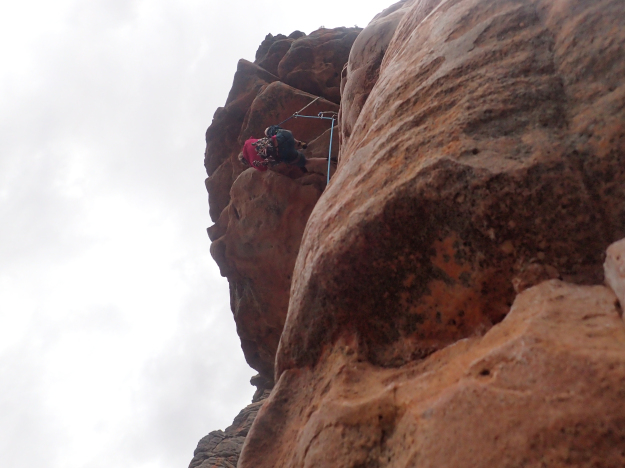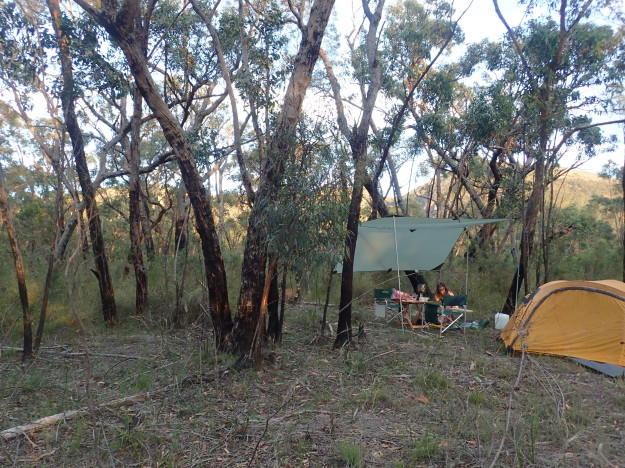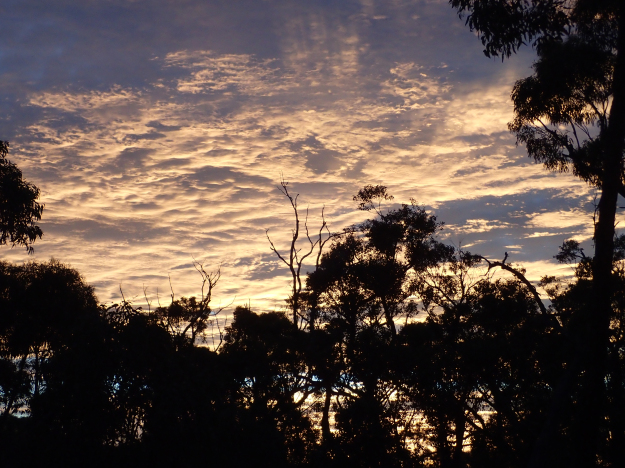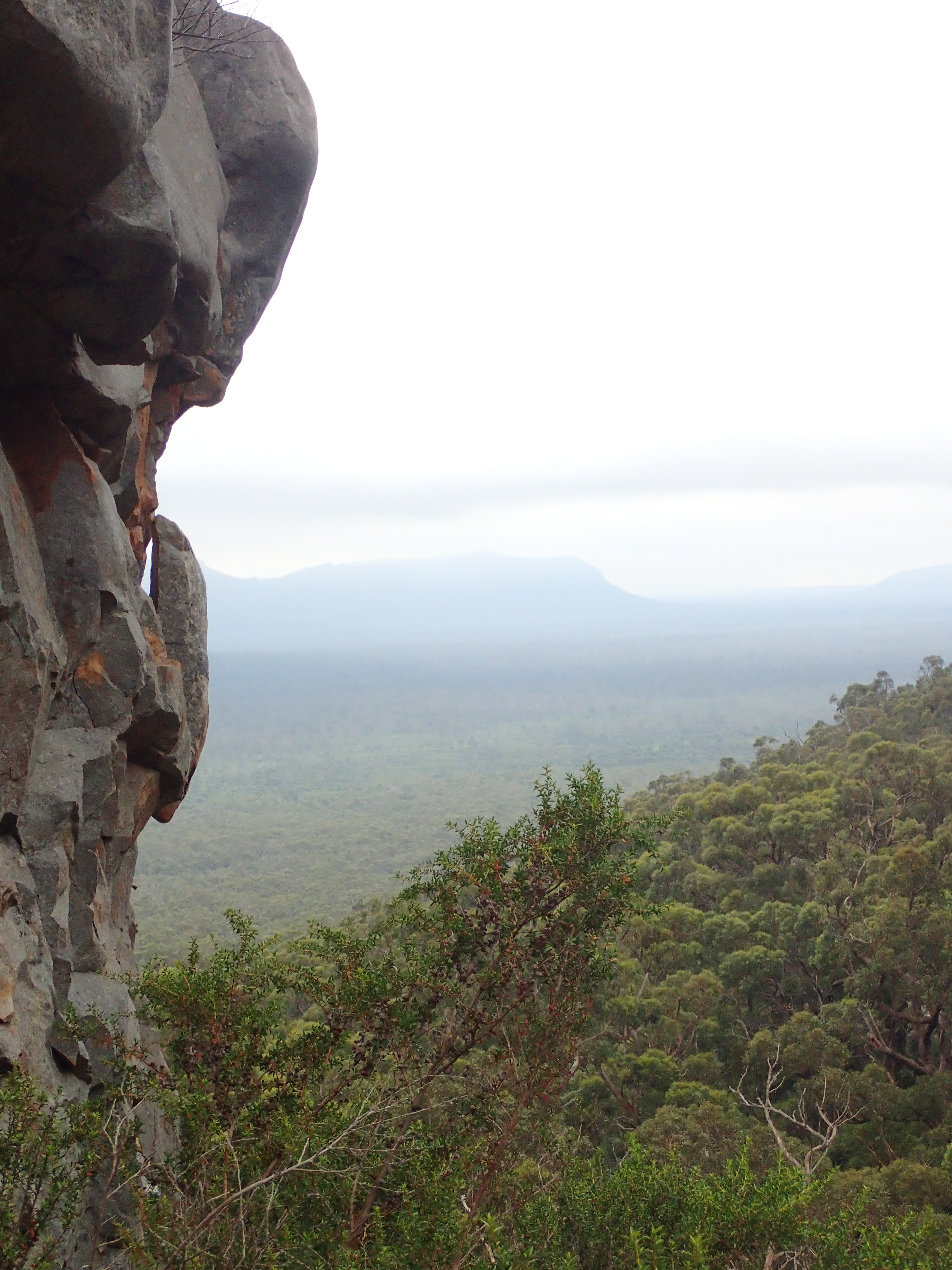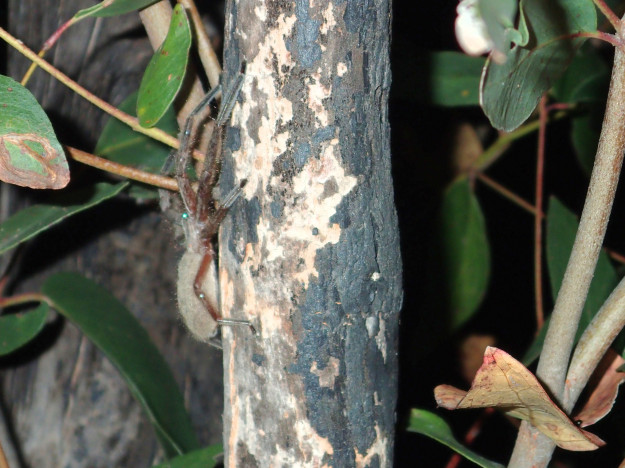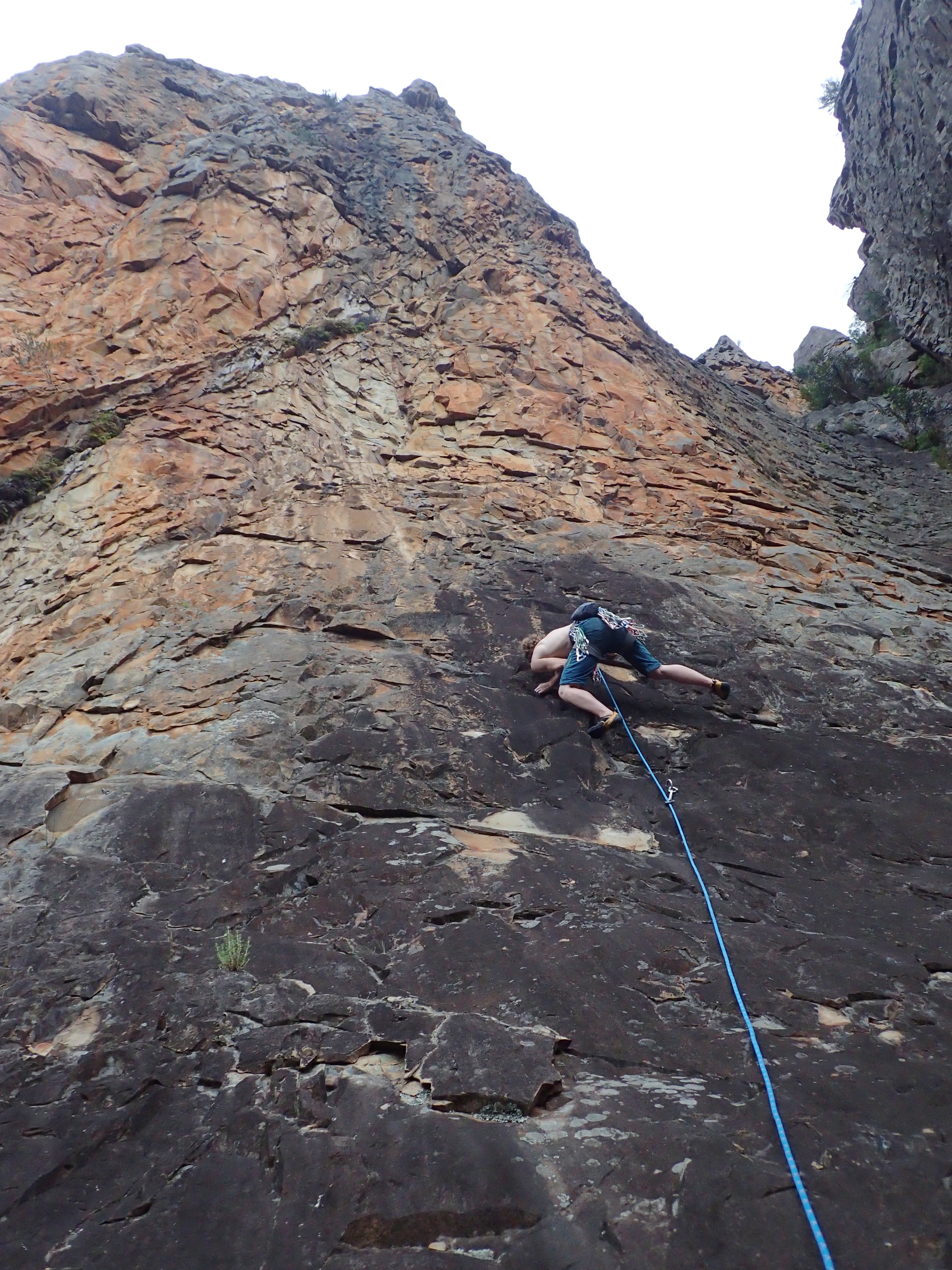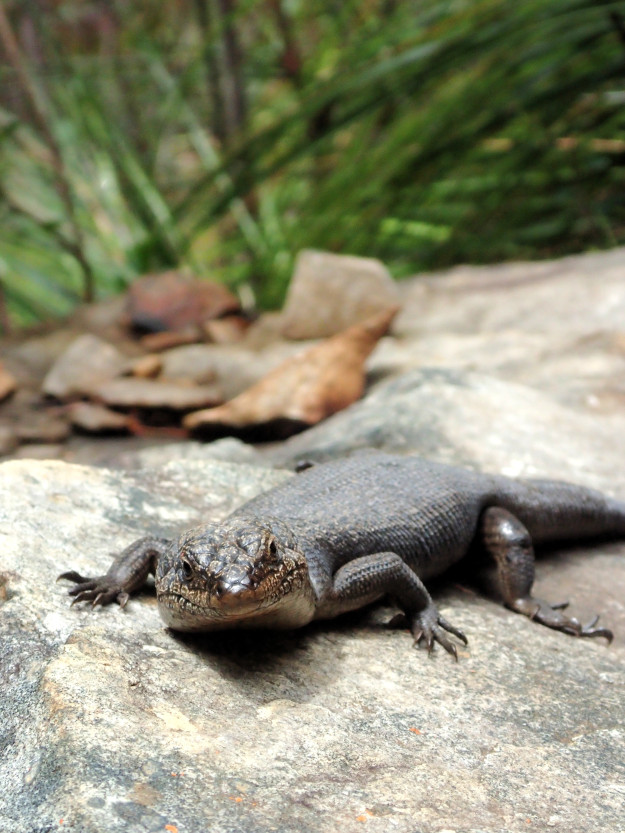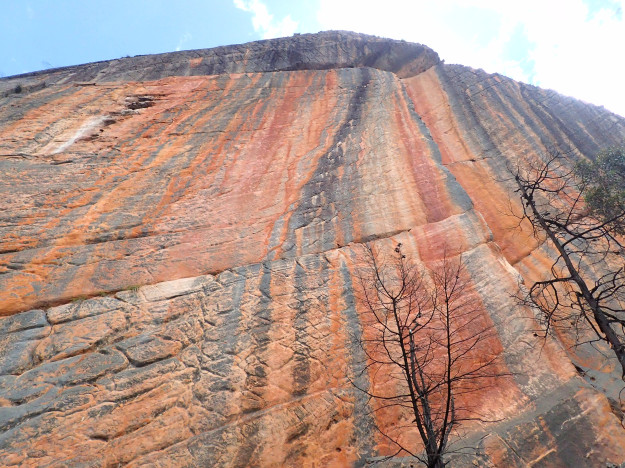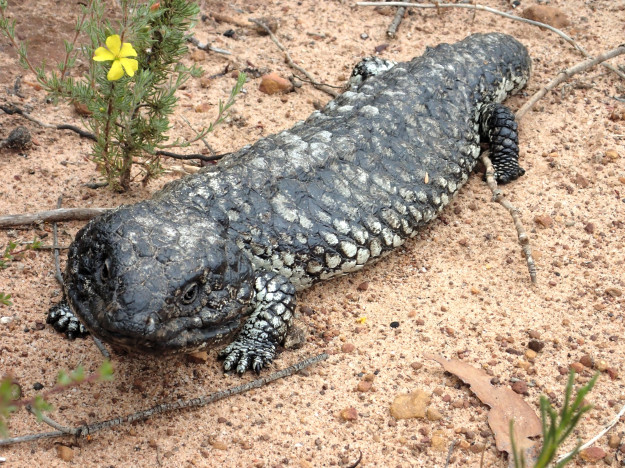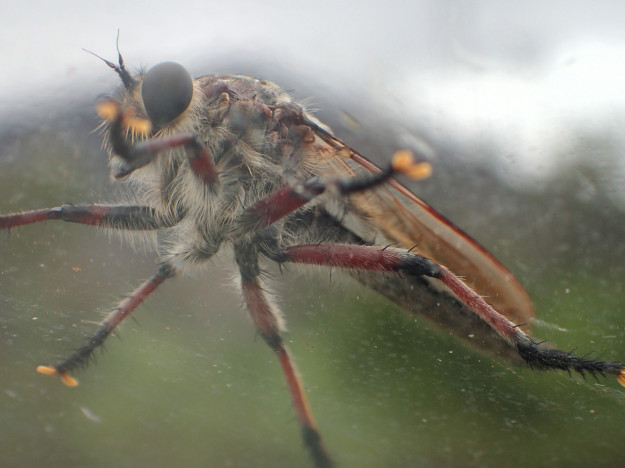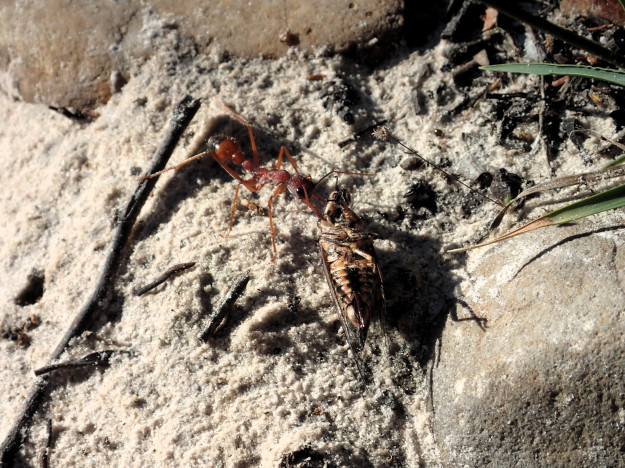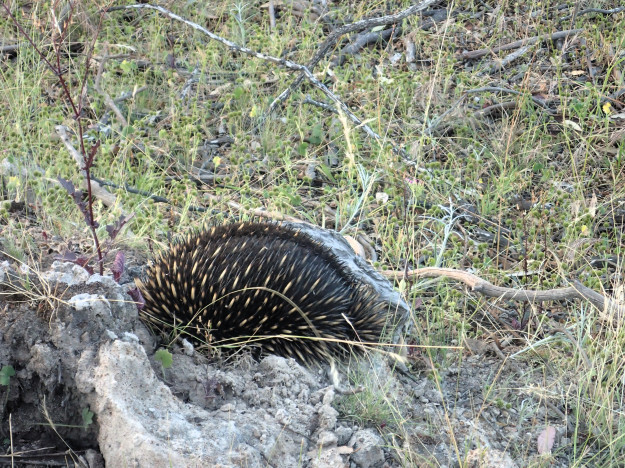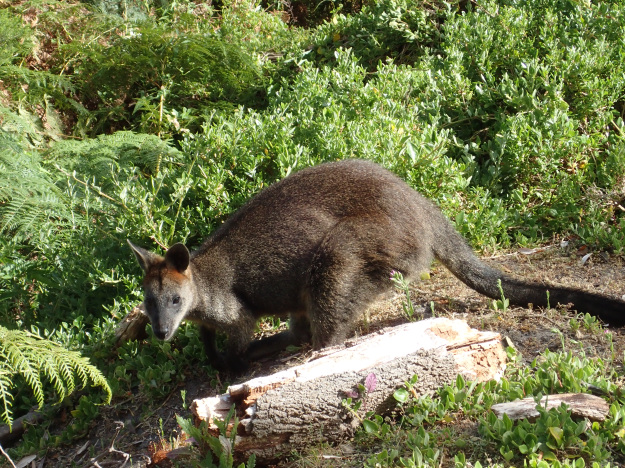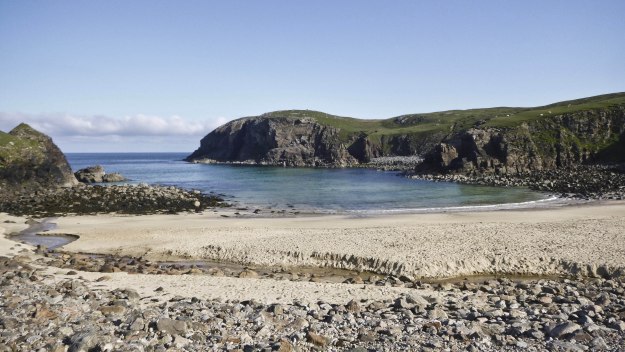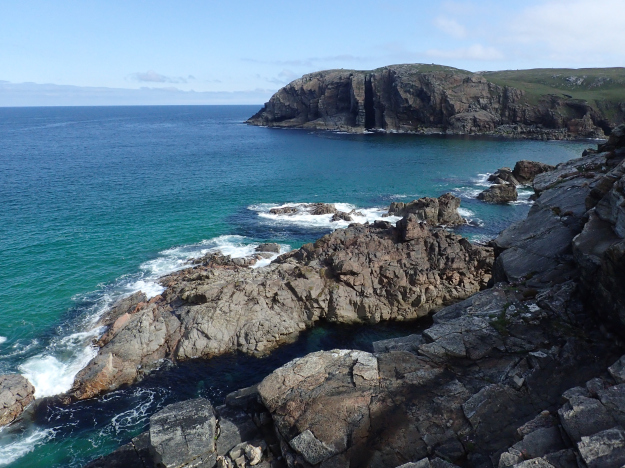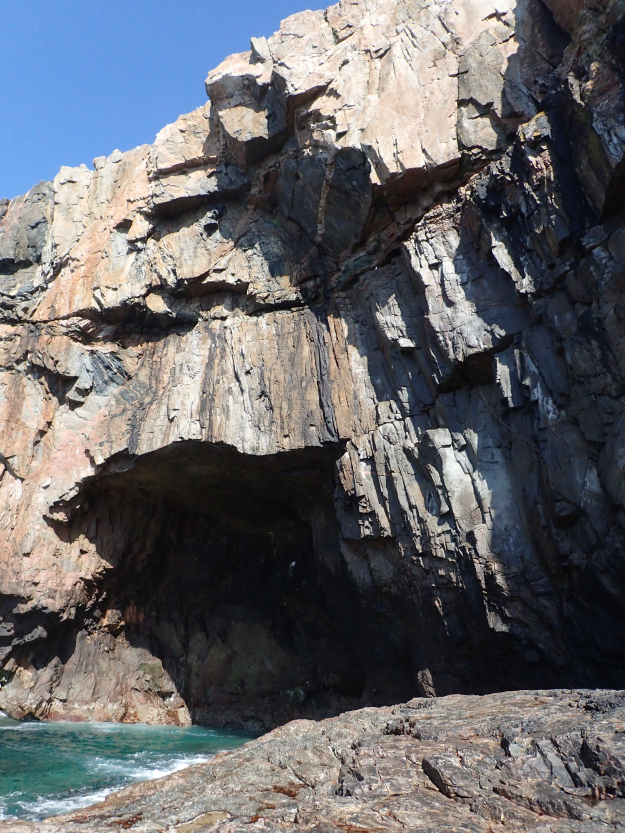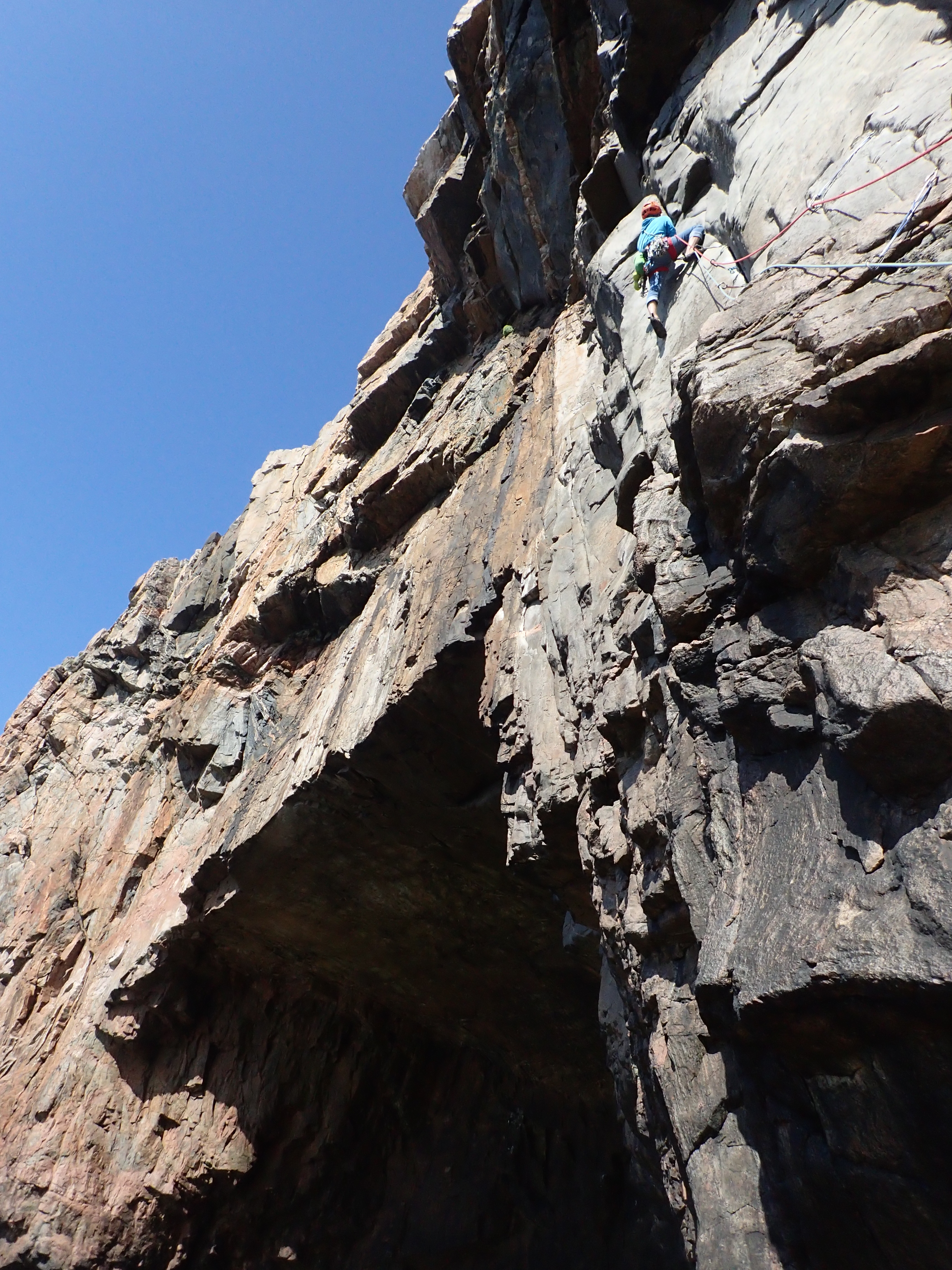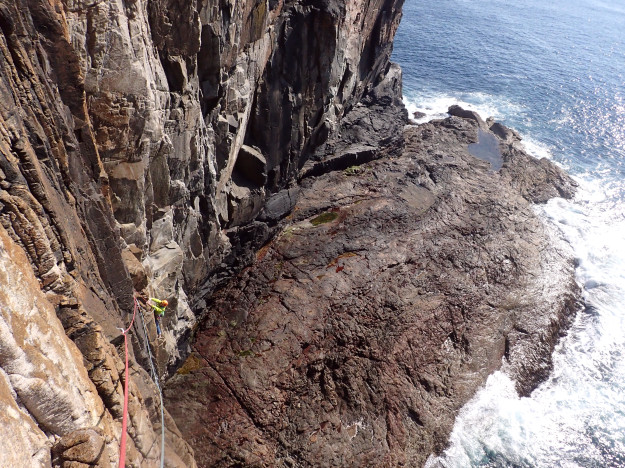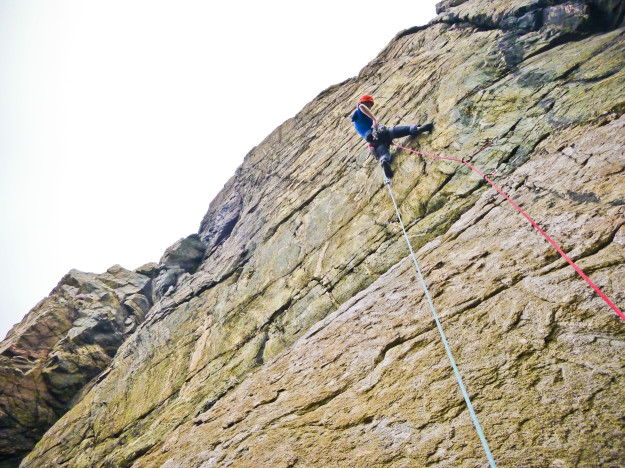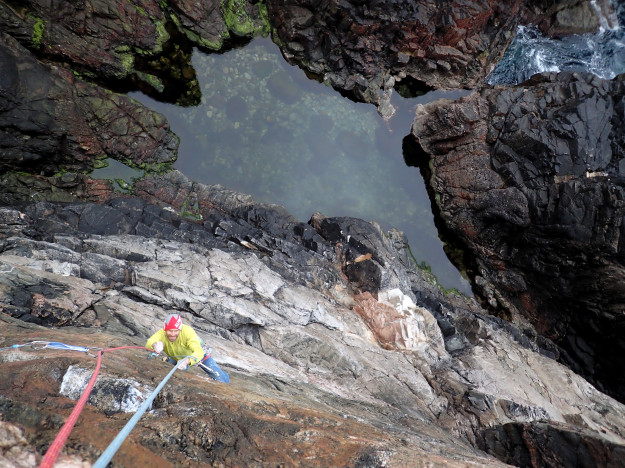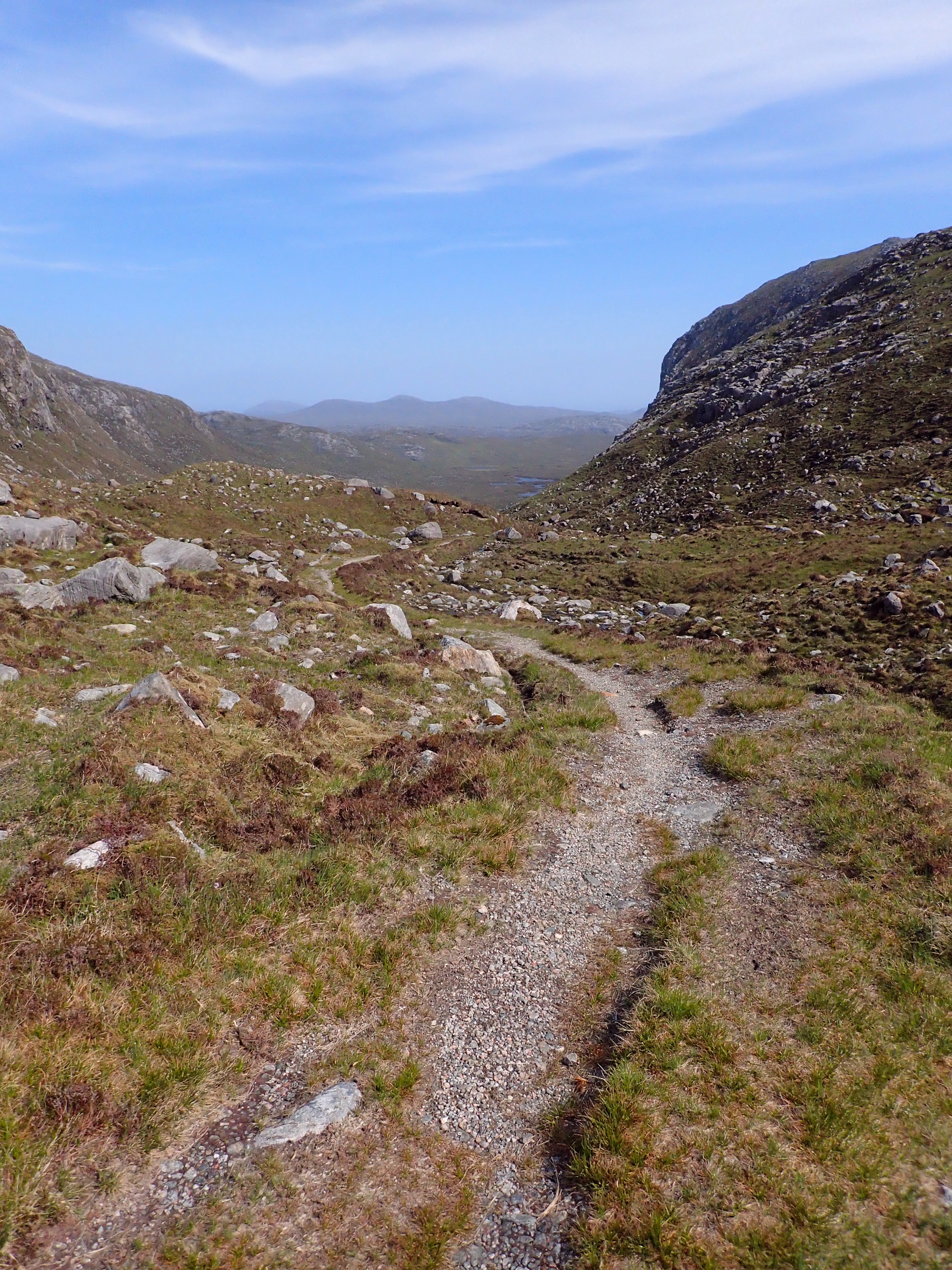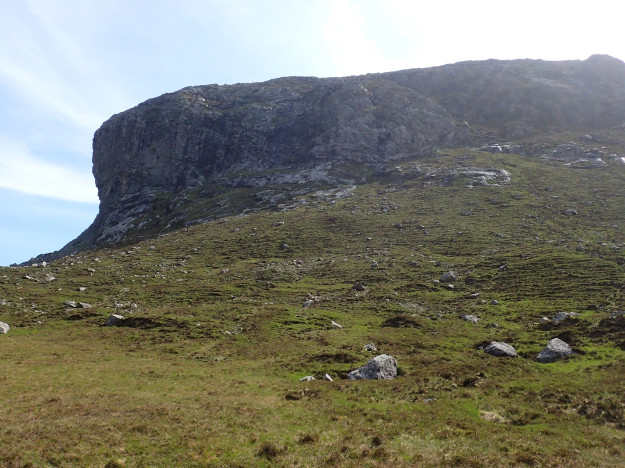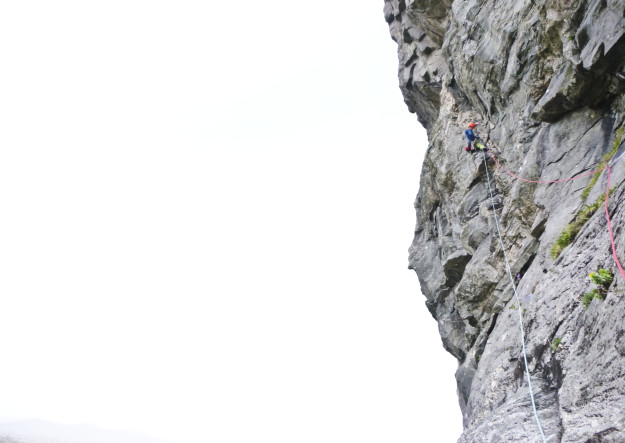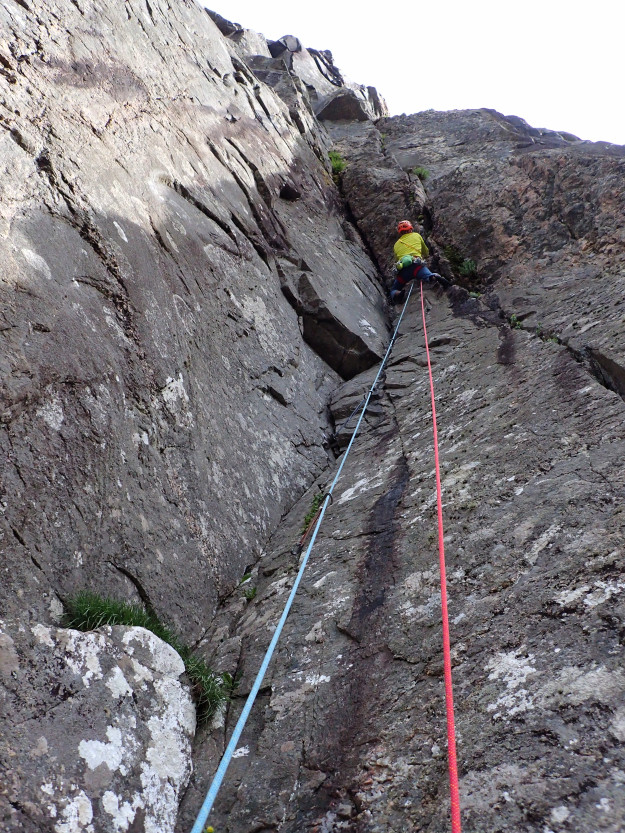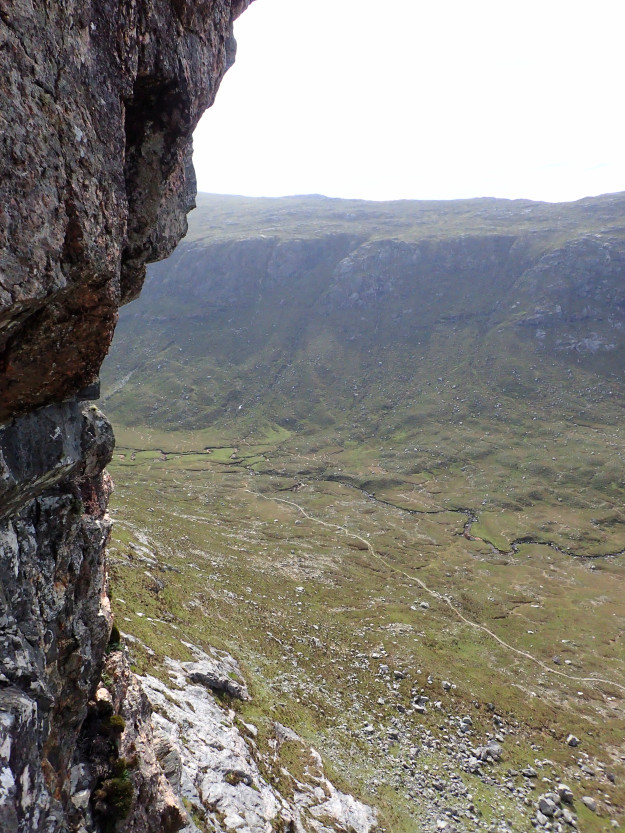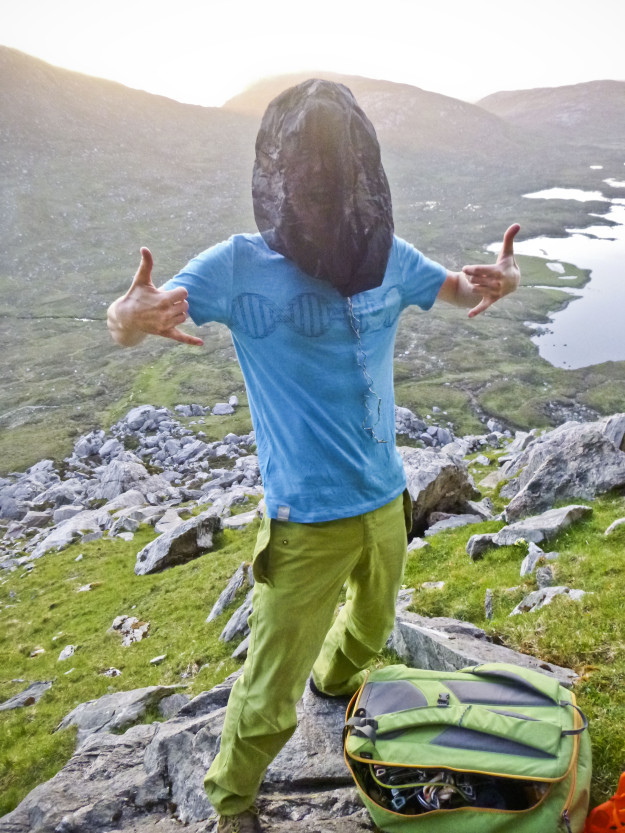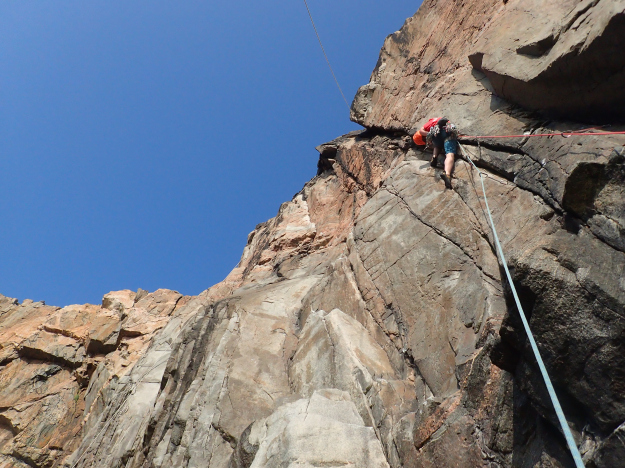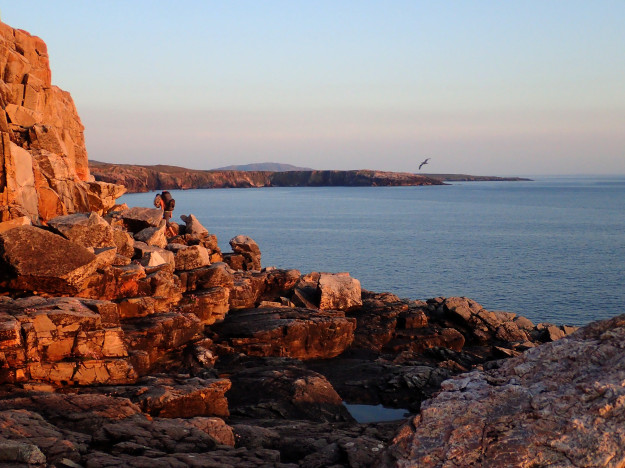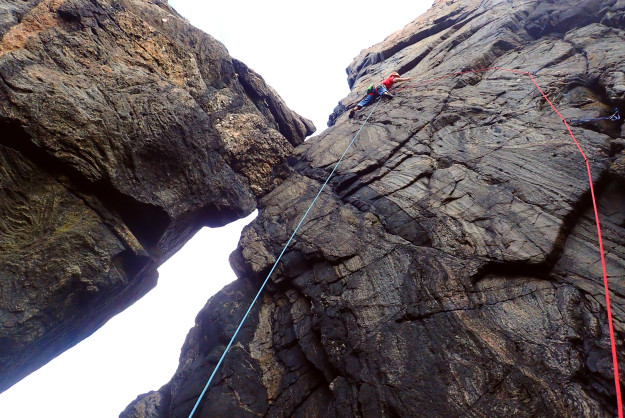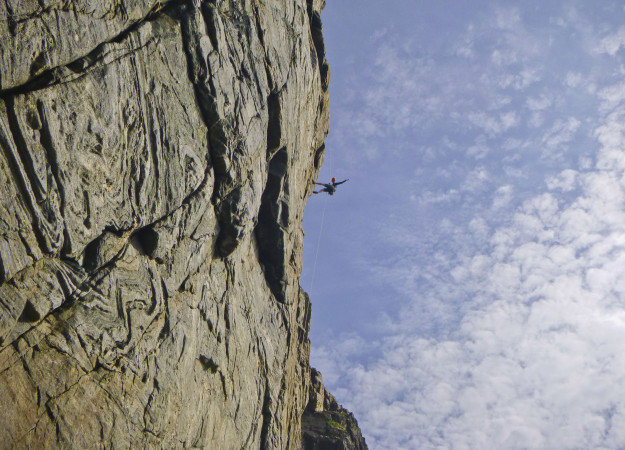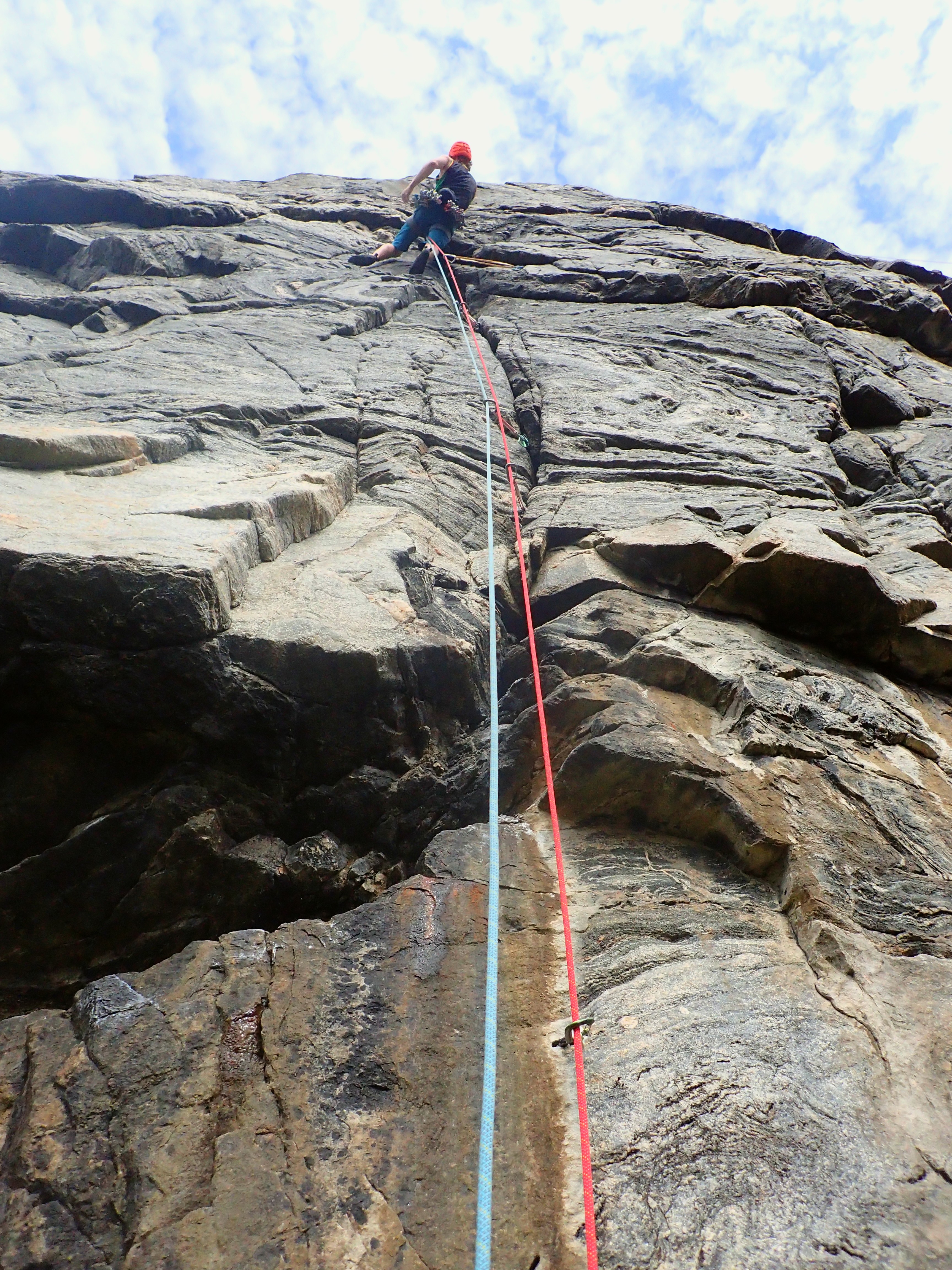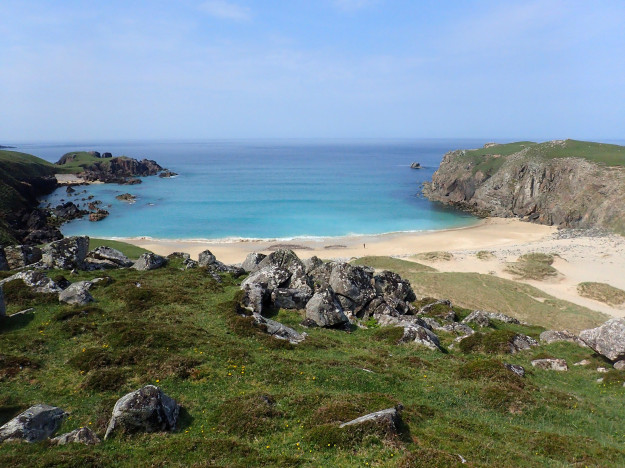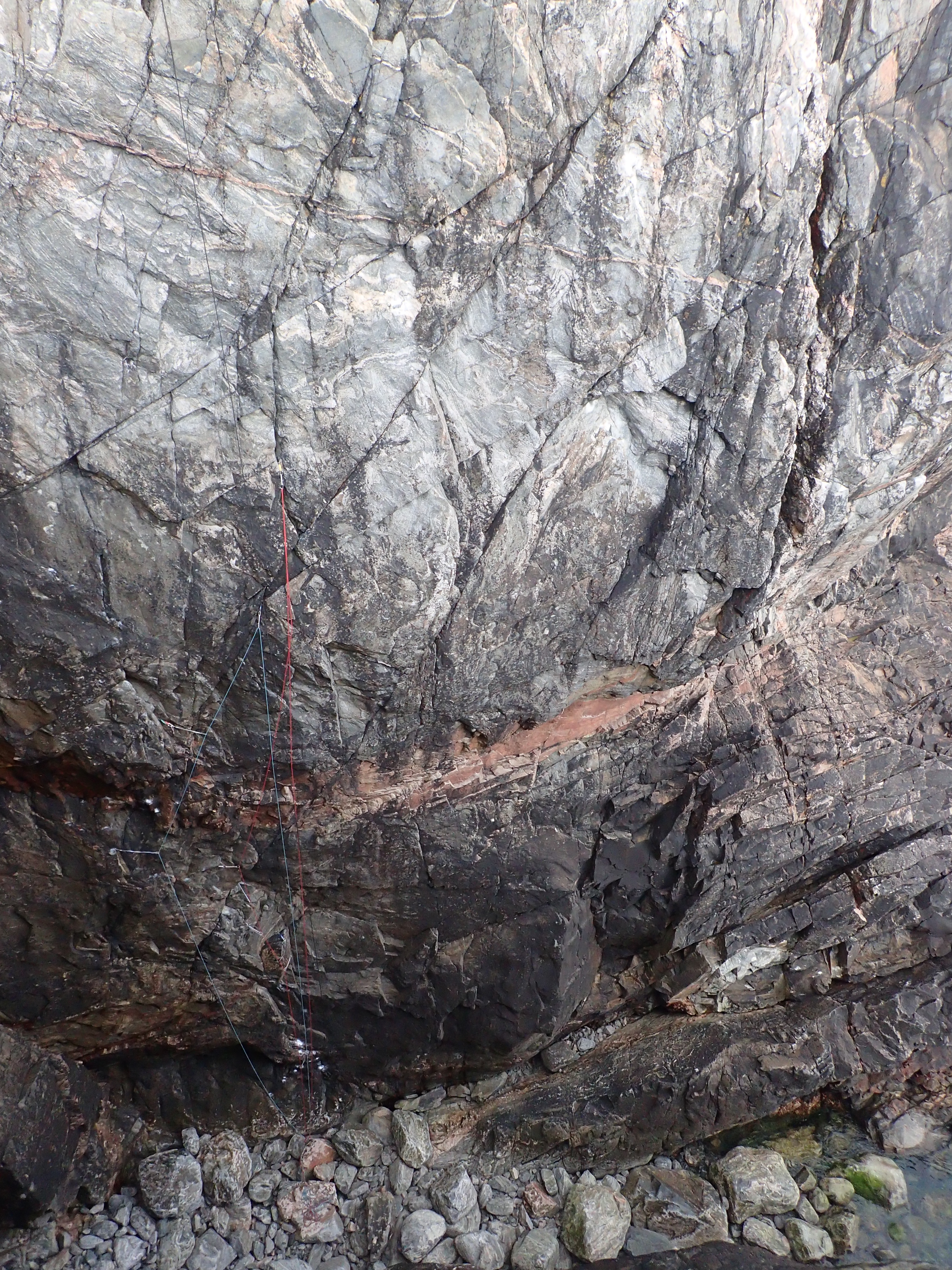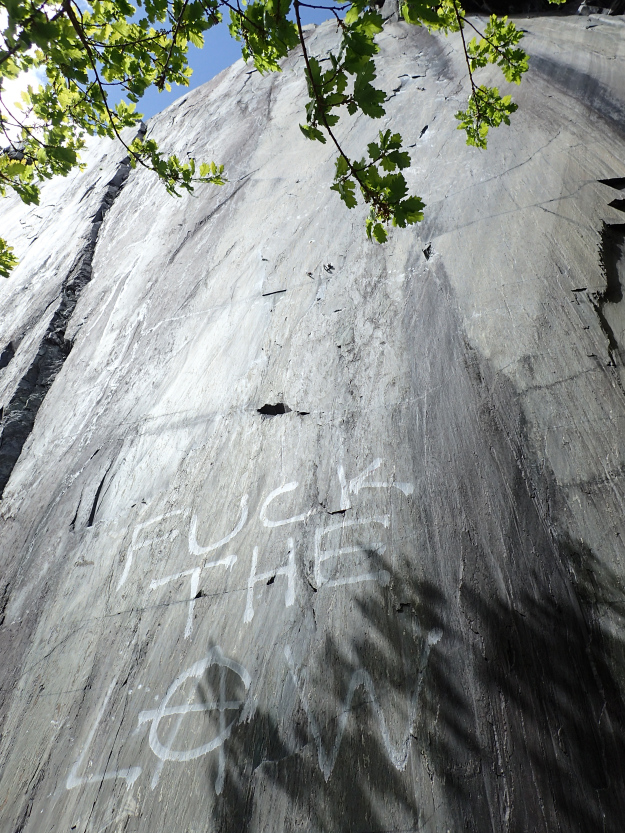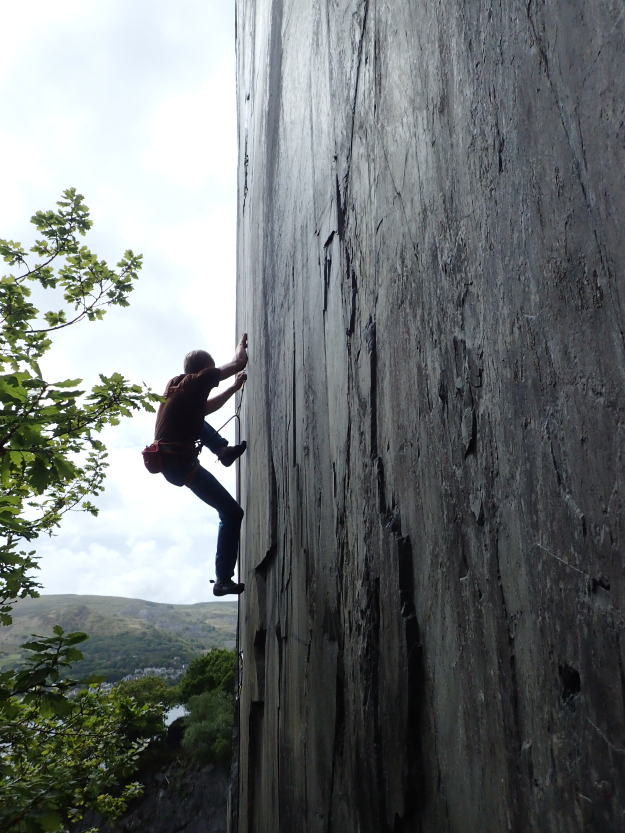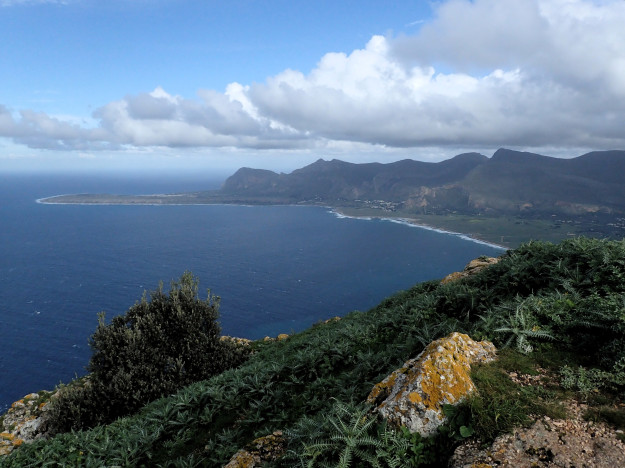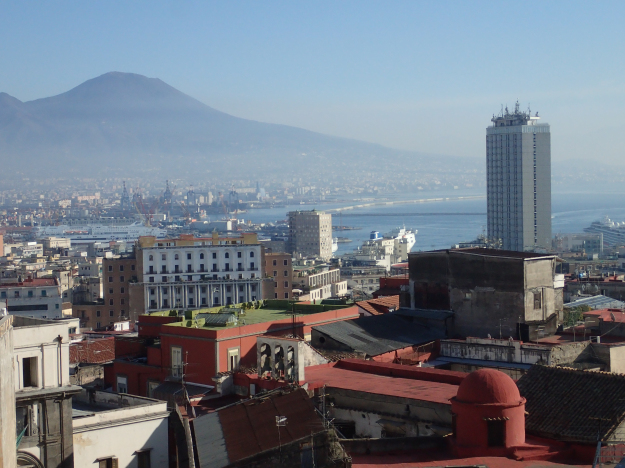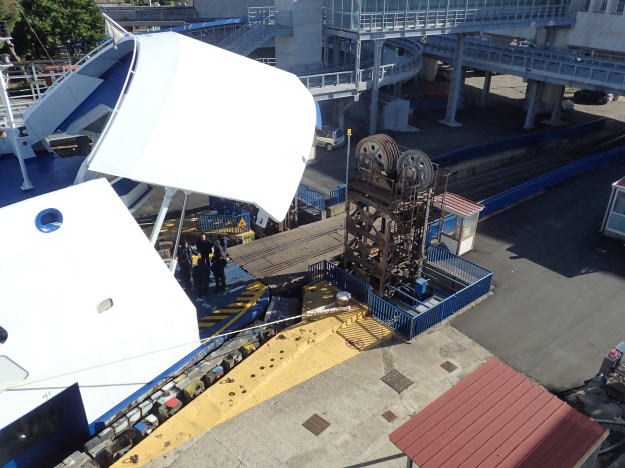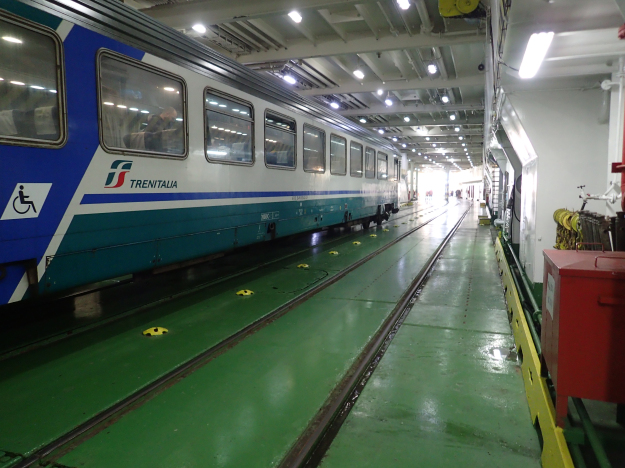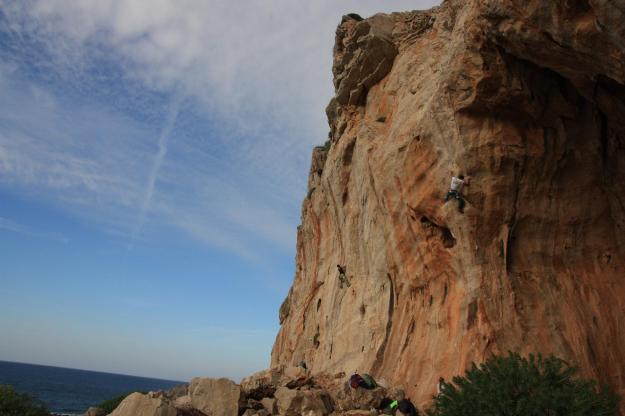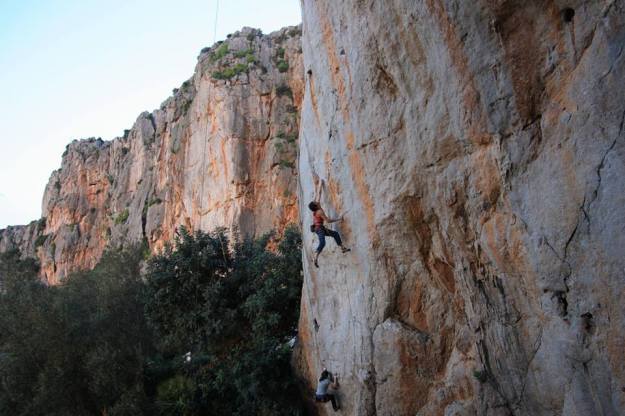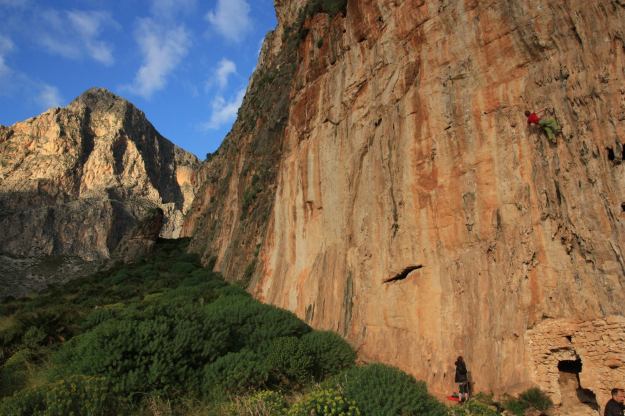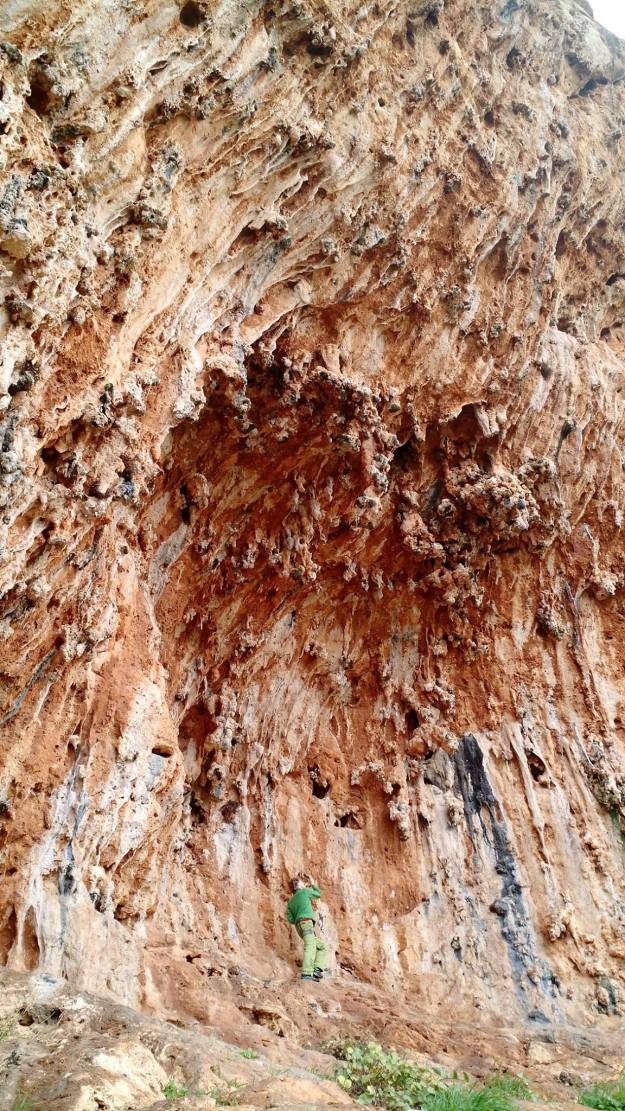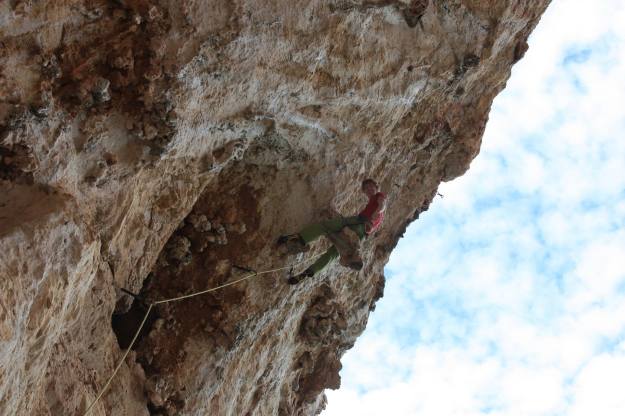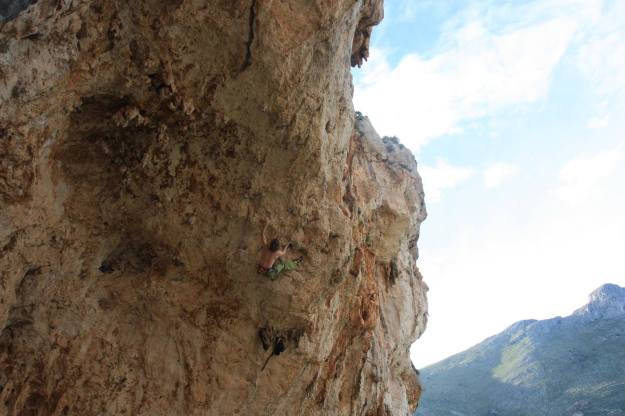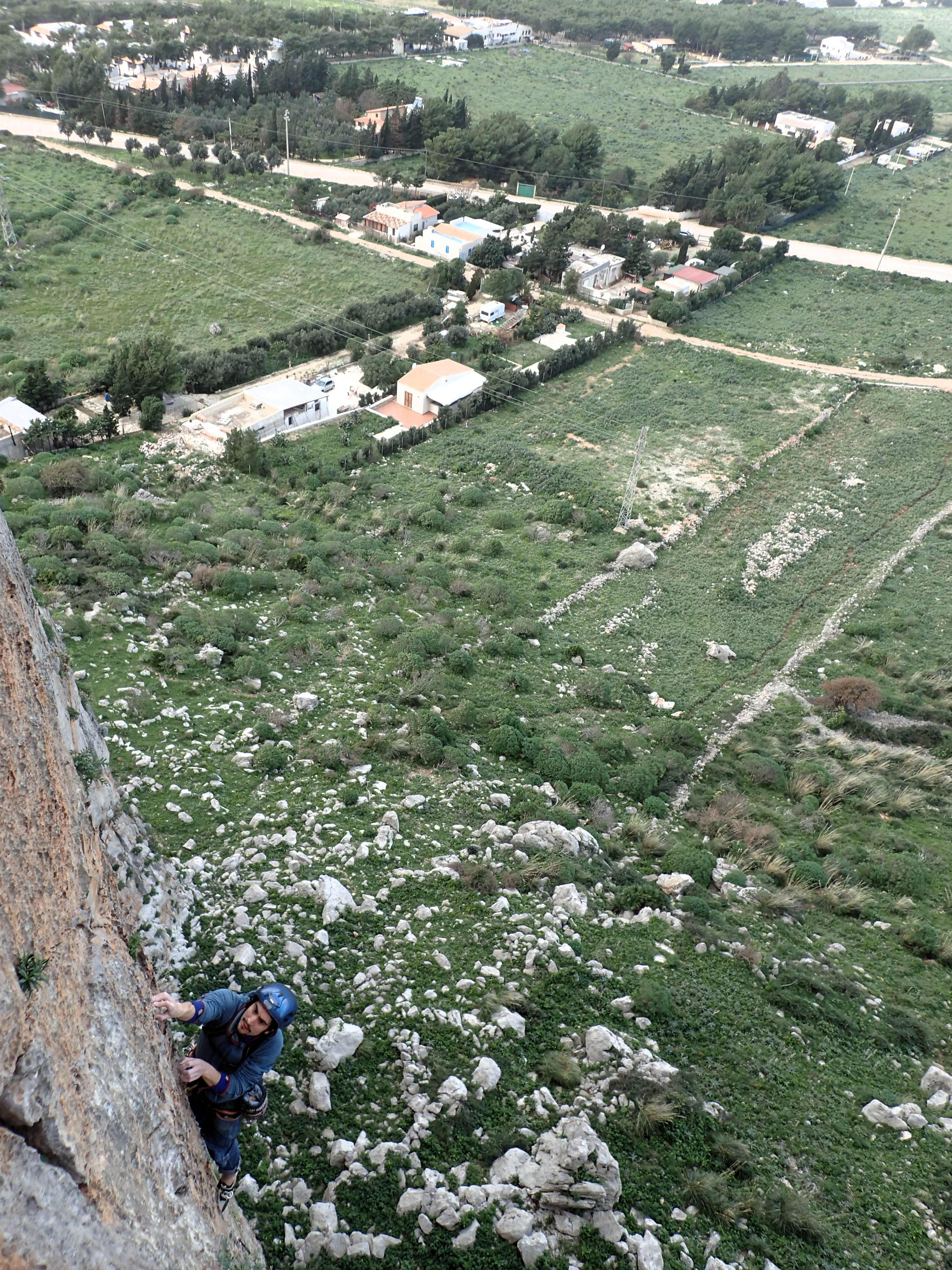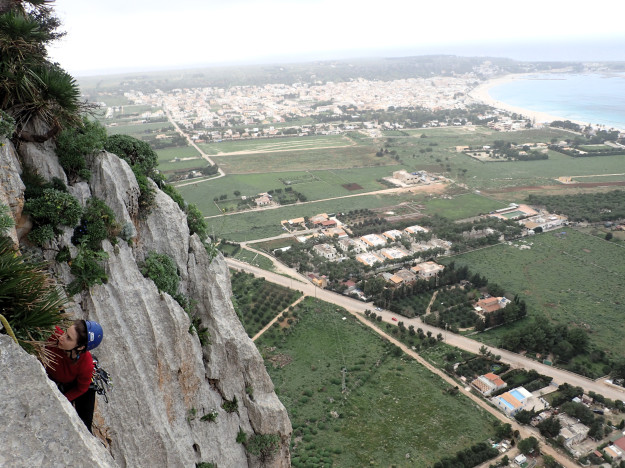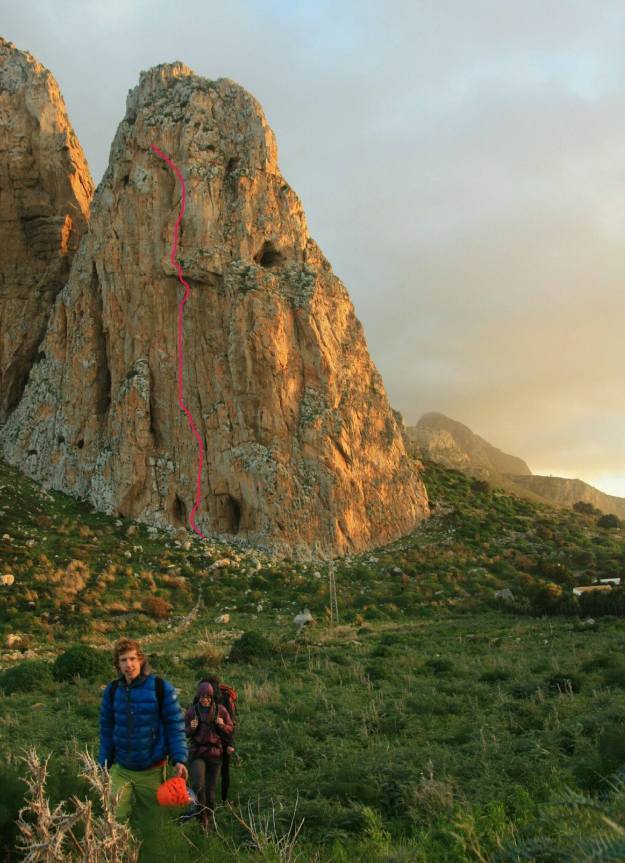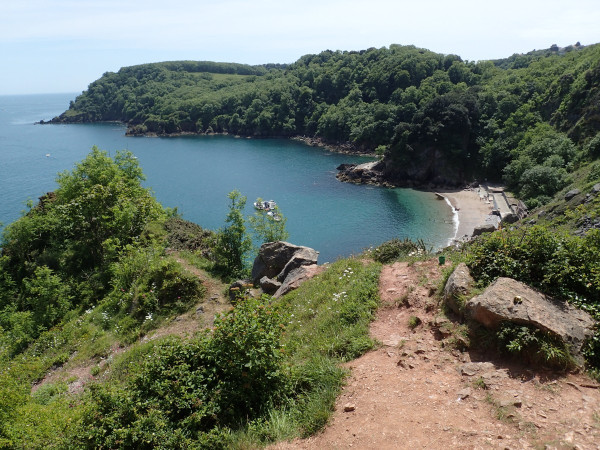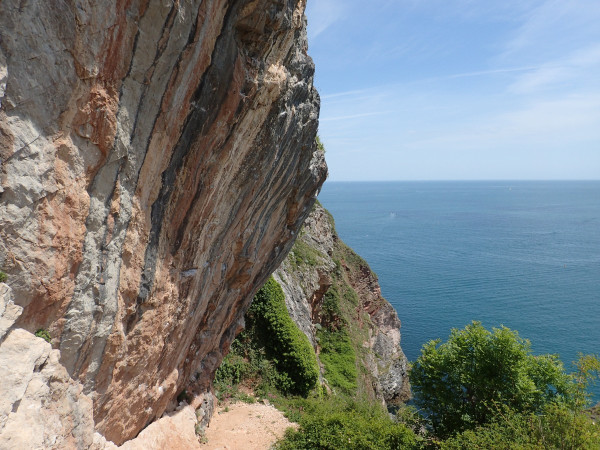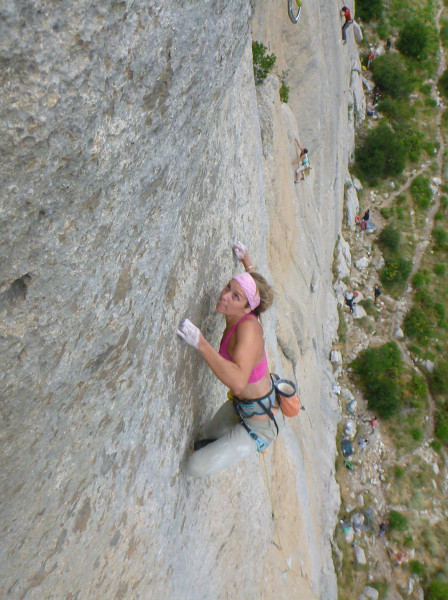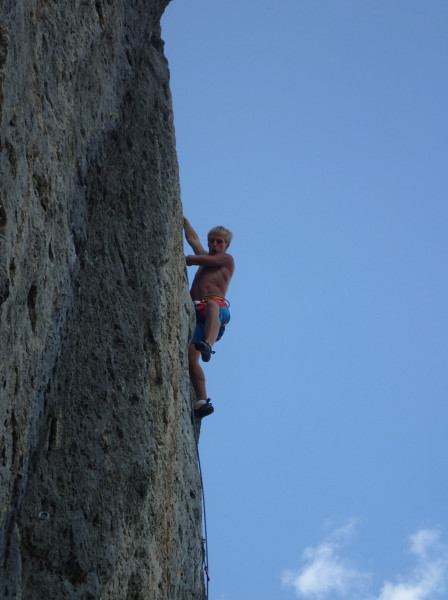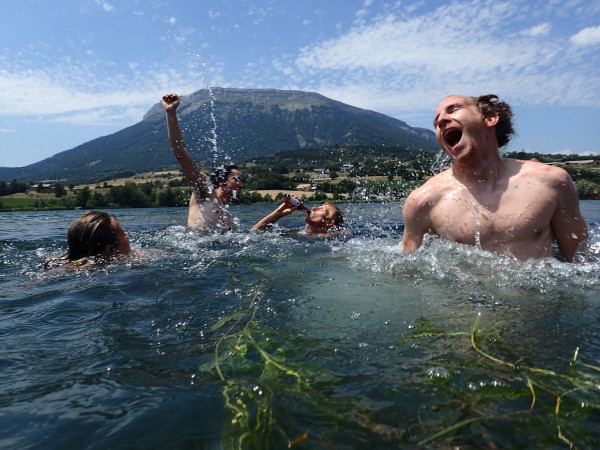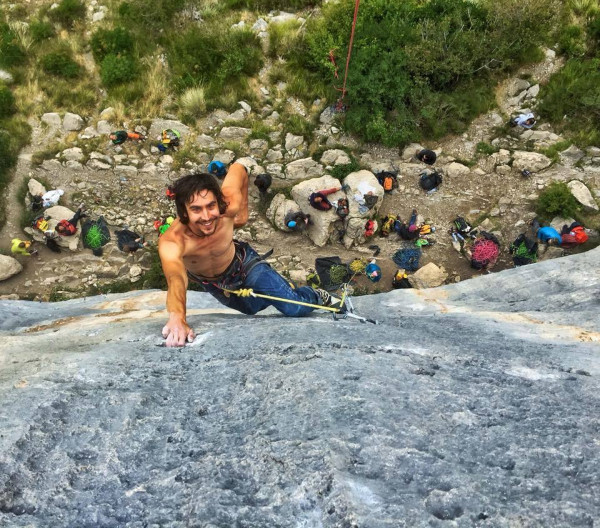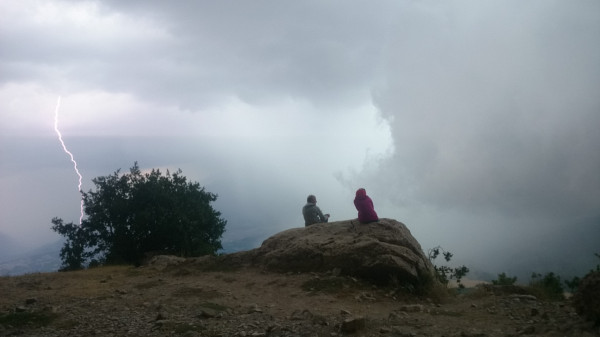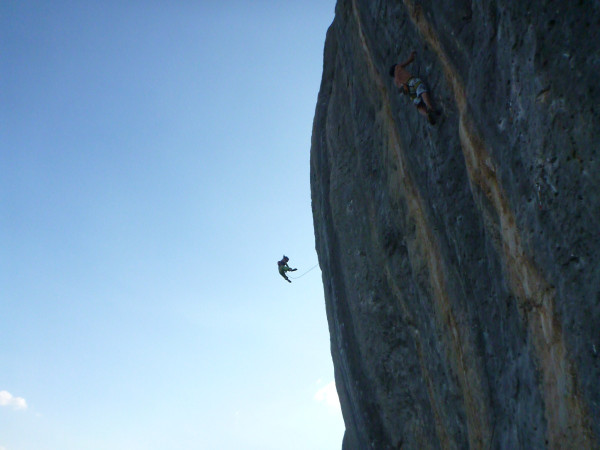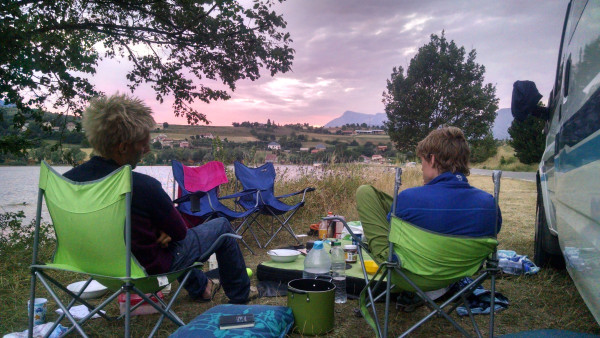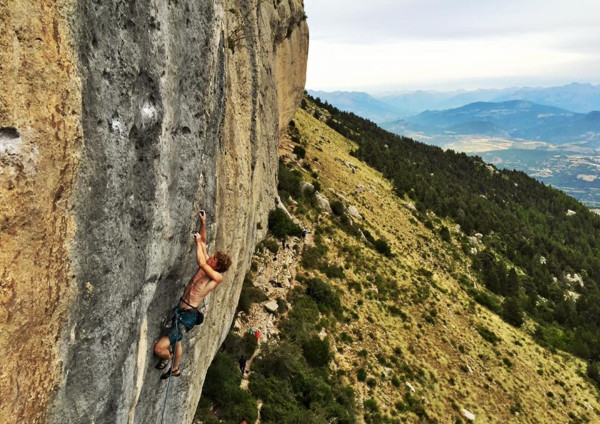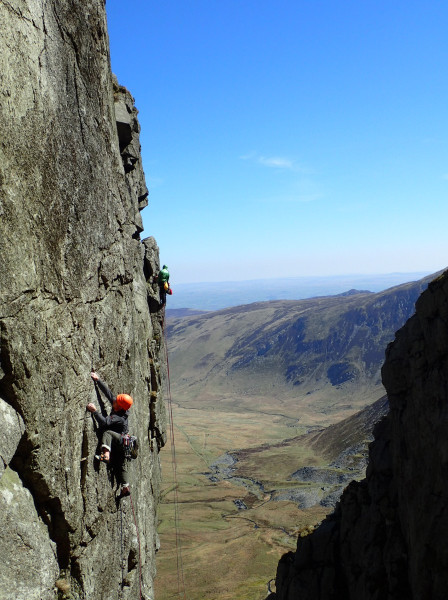This is my second and final post about our 5 month European camper van trip. Here’s part one.
We arrived on the ferry from Corsica to a bright sunny day in Toulon and immediately started the drive to Catalonia. Back in 2014 I’d spent christmas and new year in Albarracín. There I’d met a lovely couple, Marc and Itzi, who have since bought a house in Cornudella de Montsant, close to the world-famous climbing in Siurana. So we planned to head down and meet them.
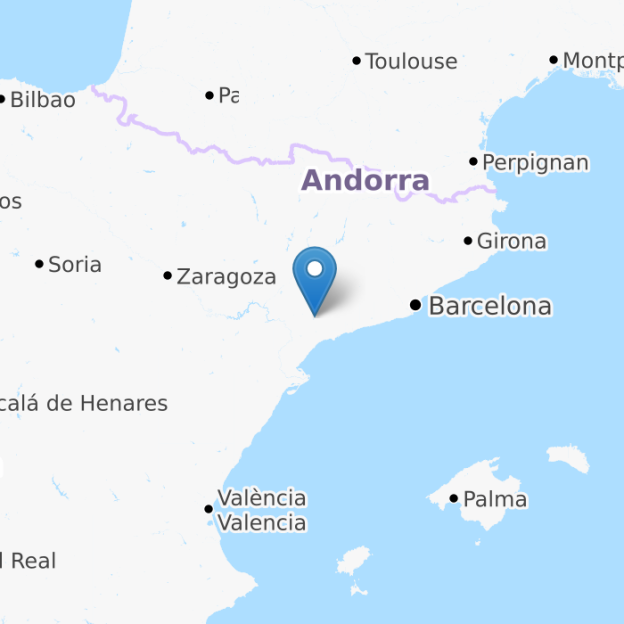
Siurana, Catalonia
Emily couldn’t climb on her sprained ankle, but since Marc and Itzi had a two month old baby, it actually worked quite well to climb in a three anyway, so that there was always somebody to comfort the baby.
Marc and Itzi were absolute legends and helped us with lots of things. They gave us a key to their house so we could pop in for showers, helped us convert the van’s cooking gas setup to fit a Spanish system, but most importantly they provided a postal address to which we could order 4 KG of unsalted pure crunchy peanut butter from the web to rejuvenate our supplies (finding good peanut butter in European supermarkets is a challenge…)
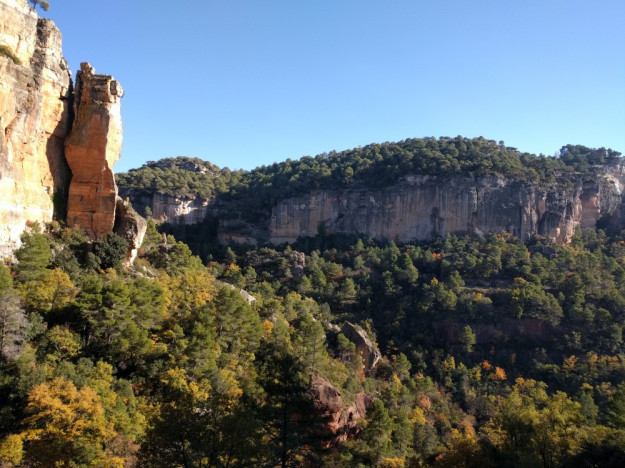
While Emily couldn’t climb she developed a packed schedule of extra-curricular activities such as guitar practise, yoga and daily reading goals. Meanwhile I climbed with Marc and Itzi and whoever else I could find. I was pleased to bump into an affable Israeli called Avi who I had met in Rodellar way back in October 2013 and we had fun working Marihuana together.
On a rest day Emily and I decided to take in a “cultural experience” at the Festival of Xató in Vilanova i la Geltru. Xató is a traditional Catalan sauce which is served in an endive salad, and there was a competition for who could make the best version. I can’t say we liked the salad all that much but the festival was a good excuse to try lots of other tasty things!
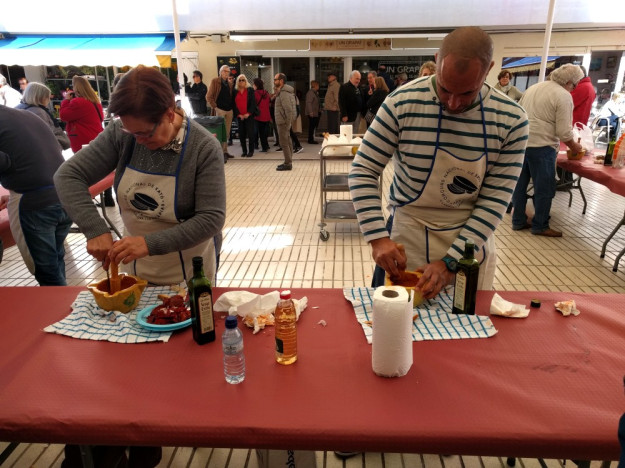
Competitive Xató making
After a couple of weeks in Siruana we moved around to the nearby pocket climbing paradise at Margalef. It was starting to get seriously cold overnight at this point and we regretted a bit not buying a van that had a heater. We frequently woke up to completely iced up windows and I was generally eating my breakfast wearing 2 down jackets, a hat, gloves, while sitting inside a down sleeping bag! In these temperatures, the only sensible crag to climb at was the south-facing Espedelles sector. Even though it was very cold overnight, it was pretty comfortable to climb in the middle of the day if the sun was shining.
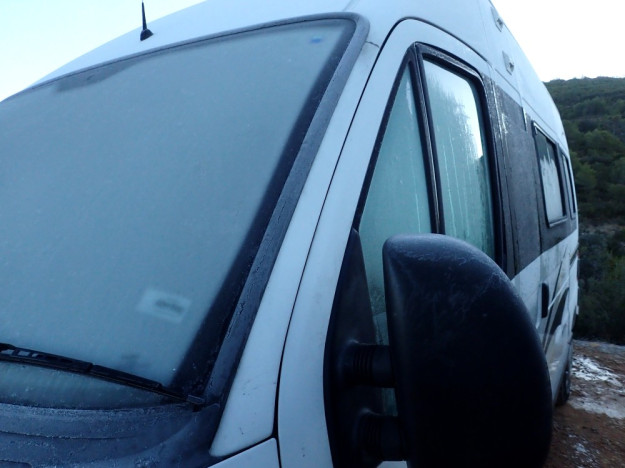
A chilly morning in Margalef
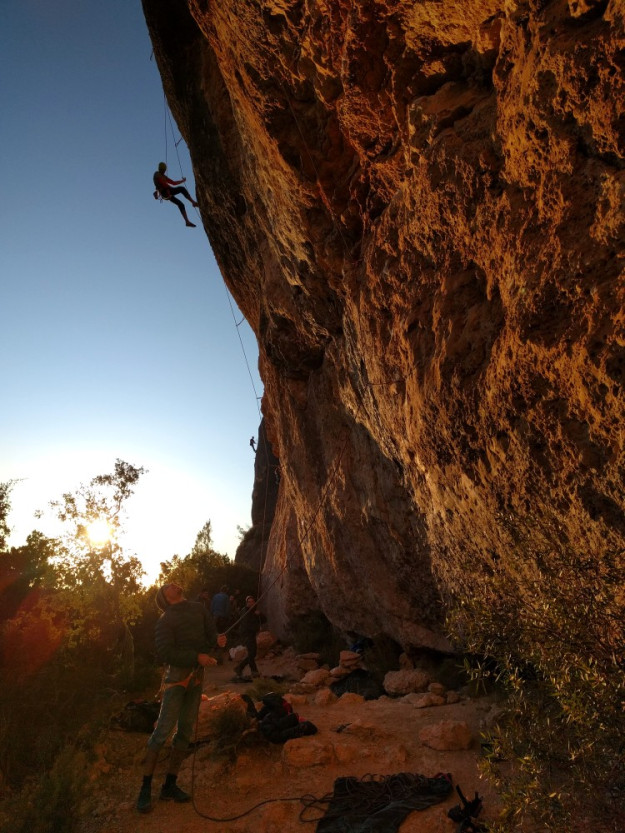
Espedelles sector, Margalef
Emily started to do a bit of climbing about 4 weeks after her accident. Her ankle wasn’t perfect but was getting better and we took it slowly at first. I was happy to have my climbing partner back!
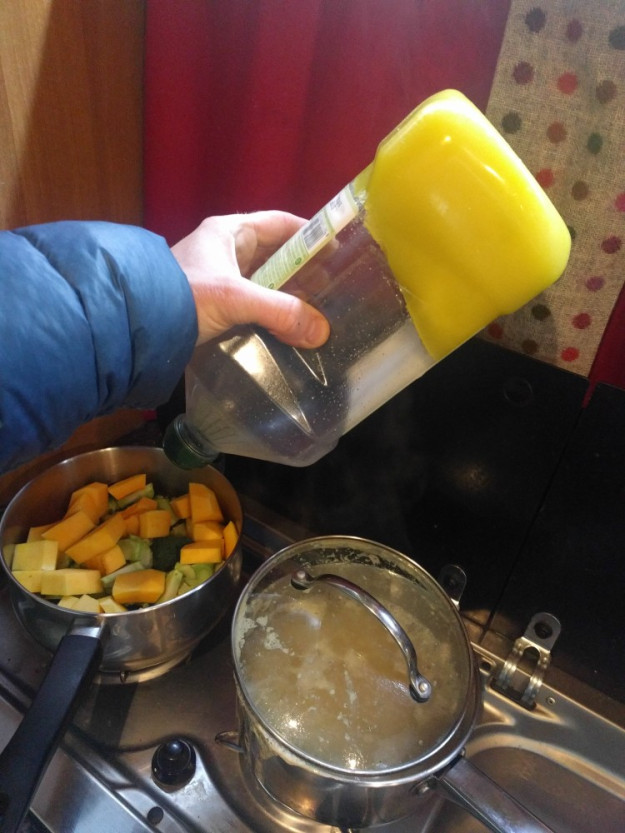
How to check if it’s cold: has the olive oil turned solid?
One day we had a video call with Emily’s mum and we clearly looked freezing, because she subsequently offered to pay for us to stay somewhere warm for a few days as a christmas present. We decided to book somewhere in Andalusia (the south), which gave us a bit of a deadline to wrap things up in Margalef. I had a project on the go (an 8a+ called Braguetasso), which is really the only reason we didn’t leave any sooner. The day that I did it we immediately got in the van and drove to Chulilla, where the temperatures were much more pleasant (in part because of its lower altitude I think).
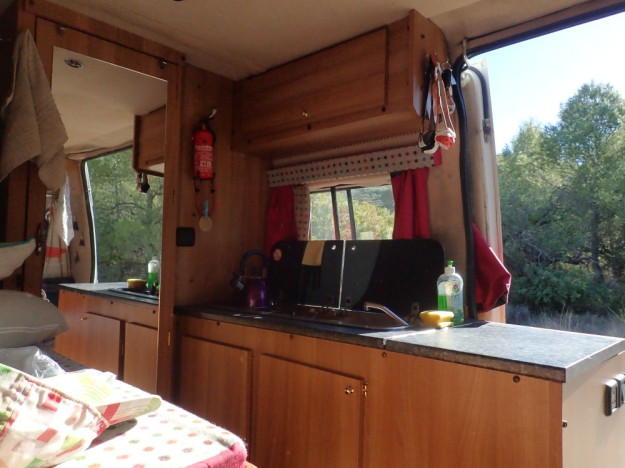
Thawing out in Chulilla
We only had time to spend a few days in Chulilla to break up the journey south, but I didn’t mind as I’ve previously spent 4 weeks there over 2 separate trips. It’s funny how popular it has become. On my first trip there it really felt like we’d found somewhere a bit off the beaten track.
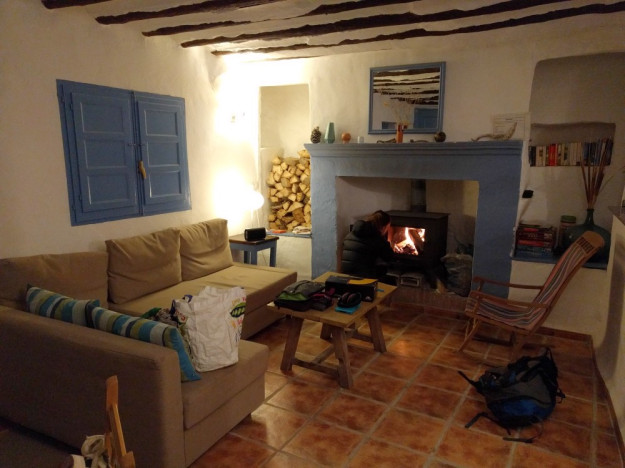
Enjoying the wood stove
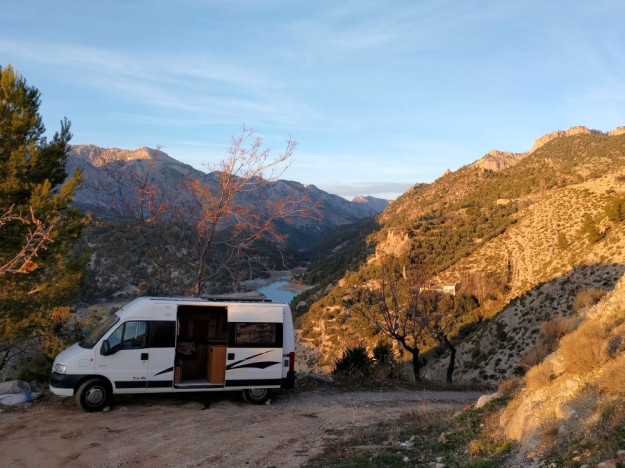
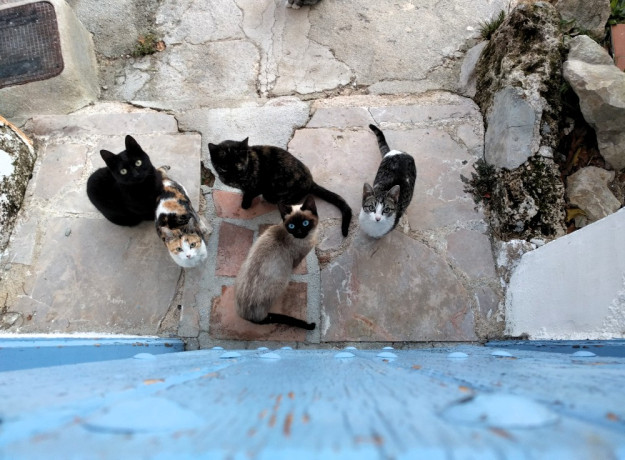
After a few days enjoying the luxury of having a wood burner and an oven in the holiday cottage, we made our way to El Chorro. This is somewhere I’d never been but seemingly every other climber I knew had, so it was an obvious destination. We had a few days there over christmas before heading off to board a ferry to Morocco – our plan was to return to El Chorro when we came back to Spain.
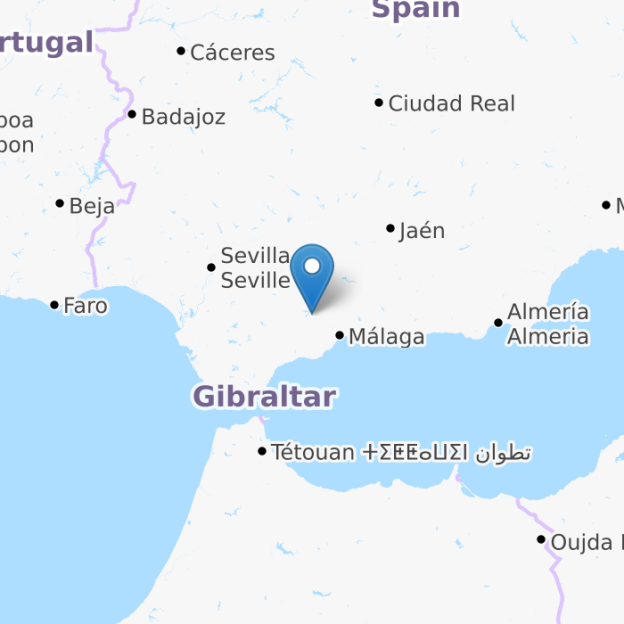
El Chorro, Andalusia
We’d arranged to meet some friends in Morocco which we were pretty excited about. Glyn and Amy came via train to Algeciras, and booked onto the same ferry as us. We offered to cook them some dinner in the van and bring it onto the ferry, which would have worked out great if the ferry had actually left at its scheduled departure time of 8pm, but it actually left at 10.30pm by which point we were all quite hungry!
On arrival, we had to get the van through the Moroccan customs ‘temporary vehicle import‘ process, which was quite a struggle.

Akchour, Morocco
We waited ages for an official to come and deal with us (it felt like they were deliberately ignoring us), and when one finally did, he said that there was a problem with the immigration number stamped on my passport. The vehicle gets linked to the immigration number of the person importing it, and apparently it hadn’t been entered correctly in their computer system or something. He pointed me to some booths where there would apparently be a police officer who could fix it, but the booths were empty. I came back and another customs guy now instructed me to drive the opposite way back up the one-way road we had driven in on, go around a corner and take a right after 50m. There we would apparently find somebody who could fix the problem.
We did that and didn’t see anything obvious, but found some other official looking people who Emily talked in French with. They seemed to get the idea and pointed us down another road. We repeated this experience several times. Everybody seemed to know what we were after but it started to feel like a huge ploy to send the foreigners on a wild goose chase. Eventually we did finally make it to a building that looked promising – we were now several kilometres away from the customs checkpoint (thought still inside the port). On the ground floor a police officer sent us to the first floor. On the first floor another police officer took us to a different room containing a third police officer. This police officer took my passport, tapped a few things into a computer, and apparently we were sorted. We drove back to the customs checkpoint. They took a look at my passport, which hadn’t changed at all, and then simply stamped the import form without looking at anything on a computer!
The whole thing felt farcical but we were finally on our way, hours after the ferry had docked. We located Glyn and Amy who had disembarked as foot passengers and began the drive to Cafe Rueda, about 2 and a half hours away. We’d read about the Akchour area on UKC. It was 5:30am Spanish time when we arrived!
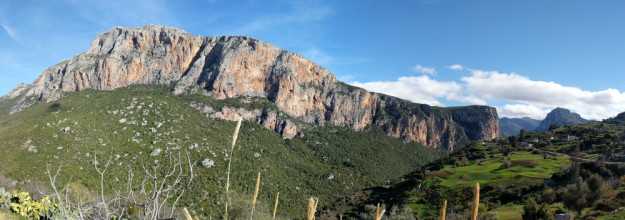
The impressive multi-pitch wall. Photo: Glyn Hudson
The next day we slept rather late, but squeezed in a few hours climbing before dark, at which point Glyn and I set off on a 6 hour round trip to pick up our others friends, Luke and Kate, from the airport.
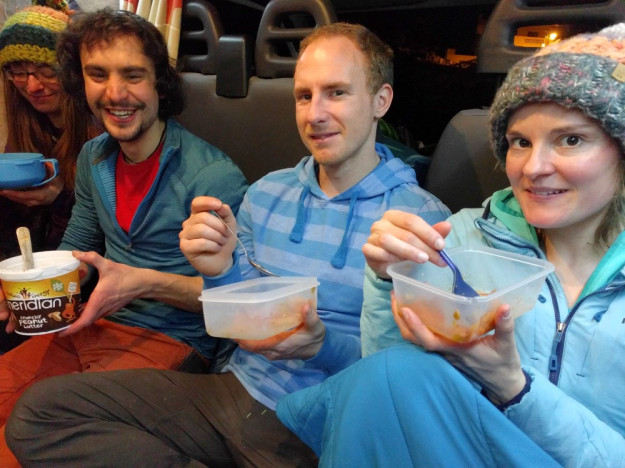
Cooking for 6 in the van was challenging but cosy!
I had some quite “interesting” experiences on the roads in Morocco, but the most terrifying one was on the way to the airport. We were on an unlit motorway when the sat nav told us to take the next exit. It was dark and a bit foggy, so I put the headlights on full beam as I came onto the slip road. Something loomed out of the darkness so I dabbed the brakes before very quickly slamming my foot down and coming to a halt mere metres before a massive concrete barrier blocking the road ahead. It turns out this exit was closed – when we later drove down the same road in daylight we saw that they had indicated this by putting black tape in a cross over the road sign, but the sign was unlit and we hadn’t noticed anything at night.
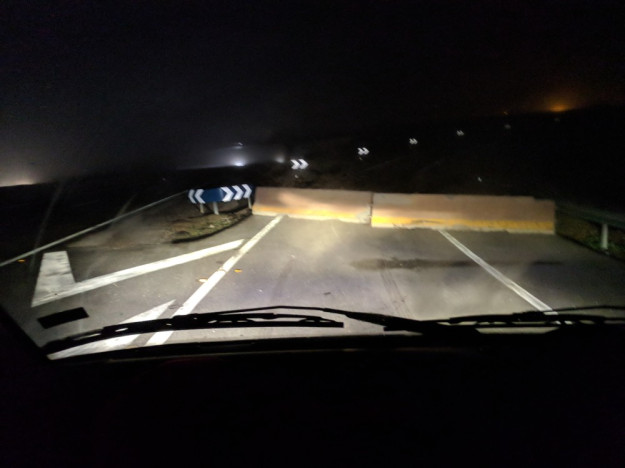
Crisis averted…
After a couple of climbing days it was new year. We went out on a little excursion to Chefchaouen, a picturesque city nearby. It has a very interesting old town with lots of cute little streets, and almost all the buildings are painted blue. We had the quintessential Moroccan experience of going into a rug shop, being given little cups of mint tea loaded with sugar and then gently, charmingly being talked into buying something. After a prolonged negotiation we came away with a couple of very attractive rugs and some spices thrown in for good measure, which I am entirely OK with.
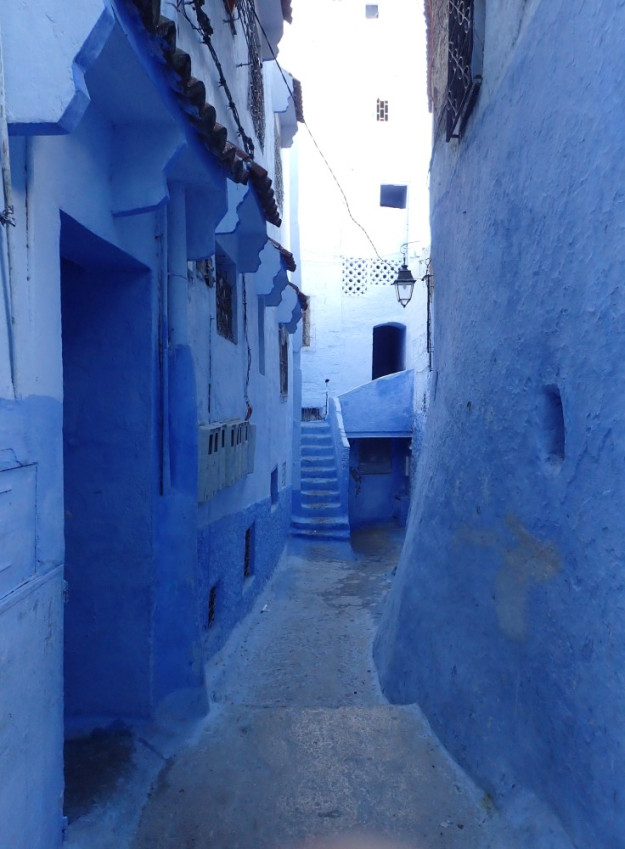
🎜 I have a blue house with a blue window 🎜
One thing everyone says about Morocco is that you’ve got to be careful about getting stomach bugs. We all tried to be pretty switched on about this and made a point to apply hand sanitiser before every meal (‘The time has come to… SANITISE’ – Chemical Brothers). But despite our best efforts Emily got taken down that evening, so I spent the next day looking after her while the others went and did a multi-pitch climb.
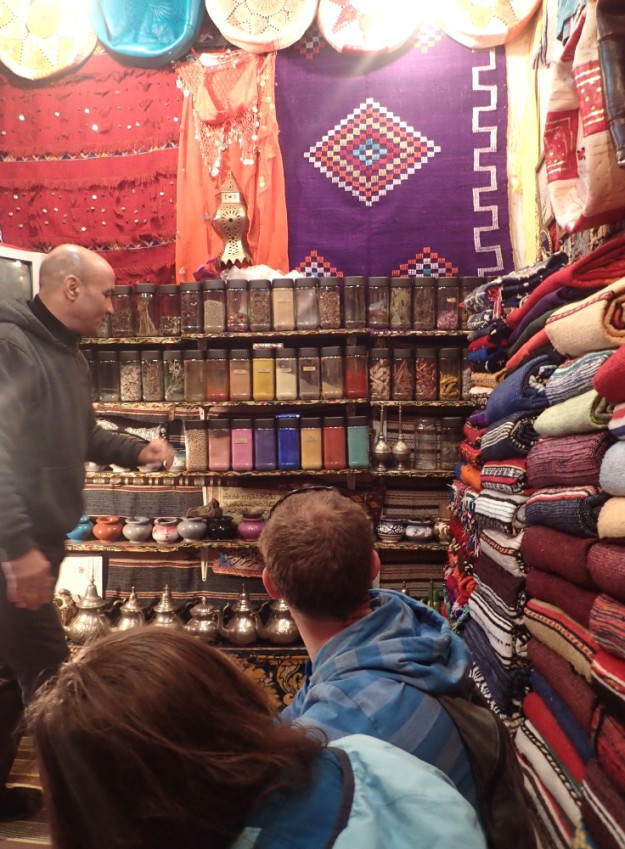
The rug shop
The next evening Emily was starting to feel better and I managed to talk Luke into doing a multi-pitch with me the following day, even though he was a bit tired from that day’s outing. So off we went in the morning. I got psyched up for the crux 7c pitch which seemed to pass fairly easily. Luke then started up the final 7a pitch and found it really hard. After trying for a while he decided to hand over to me, and I only just managed to power-scream my way to the chains. Later we realised that we’d gone the wrong way after the first two pitches, and ended up on a new route which wasn’t in our guidebook – the last two pitches were graded 7a+ and 7c, which made a lot more sense!
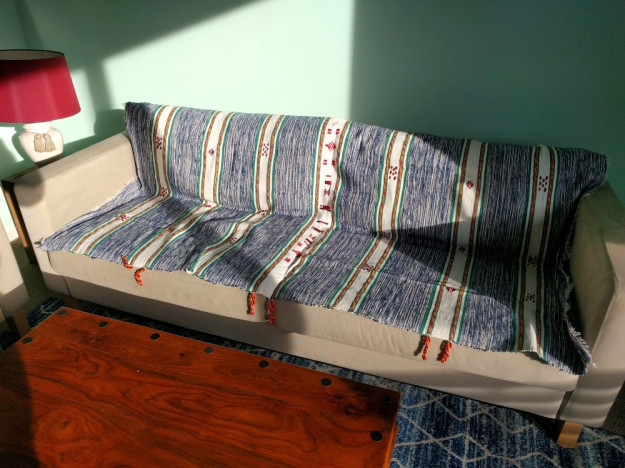
One of the rugs we bought
That evening I started to feel a bit dodgy. Initially I thought it would pass but it soon became clear that I too was succumbing to food poisoning. I had a pretty grim night puking up, but at least Emily was feeling better by this point so at least we weren’t both taken out at the same time. The others all escaped unscathed!
It started to get rather cold and rainy, which interfered with the climbing a bit. There was even some snow on the tops of some of the mountains. Still, we managed to get some things done here and there when it wasn’t raining. Emily and I did a multi-pitch called Speleologie towards the end, but it wasn’t very good – lots of loose rock and only one pitch that felt like decent climbing. On the way down we got a rope stuck and I had a terrifying but short-lived experience where I was ascending the rope in the dark to sort out the problem when it suddenly moved really quickly. For a second I thought it had cut on an edge or something and I was about to fall to the ground, but then it stopped and everything was fine. I think what had actually happened is that it was stuck on a bit of tree, and had eventually pulled free from the tree, causing me to fall a metre or so before it came tight again on the anchor. Quite scary.
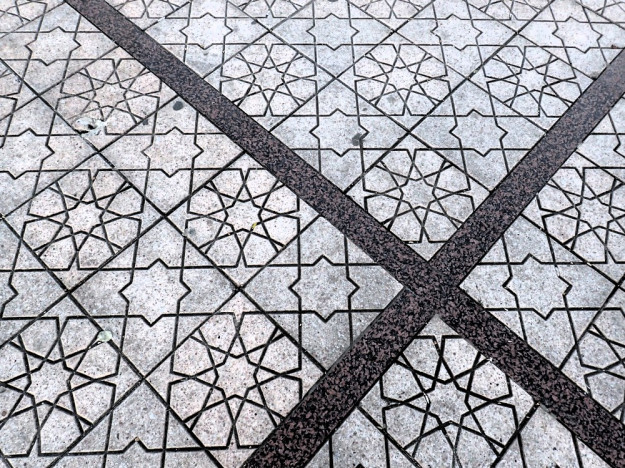
Morocco was a pretty interesting cultural experience, but I didn’t find the climbing in Akchour to be amazing. The cliff looks very impressive from a distance, but there is a lot of loose rock. There are some good pitches for sure, but also plenty of bad, chossy ones in between. It was lovely to hang out with our friends though, and if the weather had been a bit better and we hadn’t got food poisoning then I’m sure it would have felt a bit different.
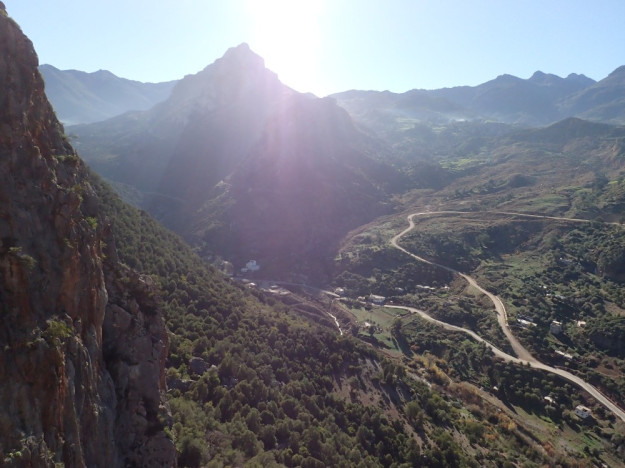
I heard a lot of things before we went about getting hassle from the locals in Morocco. I felt a little apprehensive about going over there with the van, especially given that we were basically driving around with all our possessions. In the towns and cities we did get quite a few people coming up to us and trying to sell us things (often weed!) but I never felt unsafe and generally found the locals to be friendly and generous, especially in the rural areas.
Once back in Spain we spent a day in Algeciras doing errands. We took the van to a garage to get a slow puncture repaired and I was pleased that I managed to arrange this with my fairly mediocre Spanish skills. Since the van is quite tall, the mechanic decided to drive it alongside the workshop rather than reversing inside. He then just put it on a jack and removed the wheel. Meanwhile, another mechanic got in a different customer’s car, and reversed straight back into the side of the van. Clearly he wasn’t used to there being a vehicle there and didn’t check the mirror. I watched the whole thing happen and just sort of sighed. The manager eventually came and spoke to me, and we just about managed to communicate that he would arrange for their insurance company to have it repaired. He took my details and said somebody would be in touch, so we headed back to El Chorro.
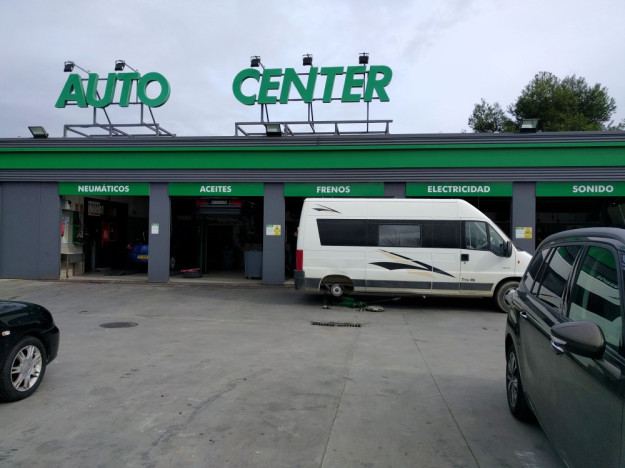
#VanStrife?
At this stage, Emily and I were both keen to do some projecting. Emily’s ankle was now quite a bit better and her fitness had returned. After some days climbing with some friends from London who happened to be visiting, we started paying regular visits to Makinodromo. It’s a stunning crag but you have to work for it, with the 1.5 hour walk in.
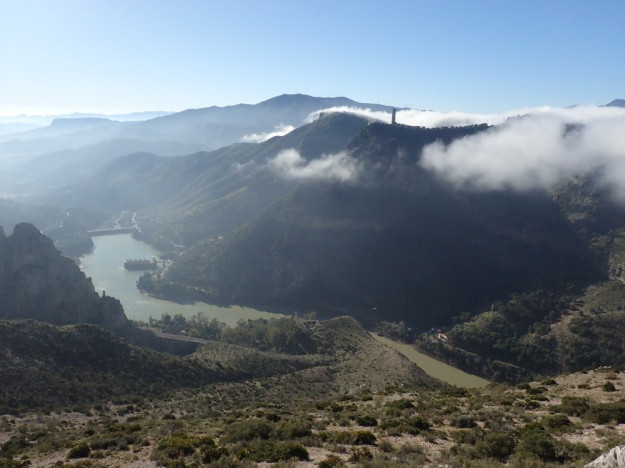
Walking in to Makinodromo
Everybody told me to get on Lourdes of course, which is surely the most famous route in El Chorro, but I was keen to push myself a bit further. I decided to try an 8b which was a grade I hadn’t climbed before and was not sure if I could climb. I picked a long steep tufa route called Randi which is just a bit to the left of Lourdes. It actually has two chains and gets 8a+ to the first, or 8b if you go all the way. On the first day there I worked the moves of the 8a+ section and it felt pretty hard. Doubt quickly crept in and I started to think maybe I shouldn’t bother trying the upper section. But Emily reminded me that I had wanted to find something hard and I hadn’t even tried the moves!
She had a point… after a rest day I surprised myself by doing the 8a+ first go. I really had no excuse not to try the full line, so I lowered the rope to get some more quickdraws and went for a look.
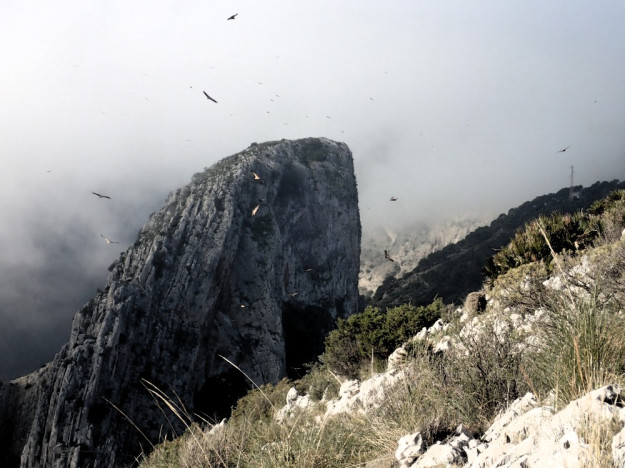
There are hundreds of Griffon Vultures in El Chorro
The climb is steep the whole way and goes like this: bouldery moves off the ground lead to moderate tufa climbing. At the top of a huge tufa you throw out right and enter a long sustained section with some slopers. There’s a jug in the middle – good for a shake out but the feet are bad so it’s not as restful as it might be. After the shake, you race up pinching a small tufa until a final big throw (quite droppable) to the finishing jug of the 8a+. This is maybe 30m up. A bit above there’s a really good knee bar – hang out here for as long as possible. When you finally leave the rest, there are a few pumpy moves and then a poor knee bar at the start of the crux. The crux is on pockets, and given my (lack of) height, the way I ended up doing it was quite specific and weird. I’m not sure if the sequence would be more obvious for a taller person, but in any case there were some pretty desperate moves stabbing into pockets for me. It took several sessions to work out a crux sequence. After the crux is maybe 5 or so metres of much easier climbing to the top of the wall.
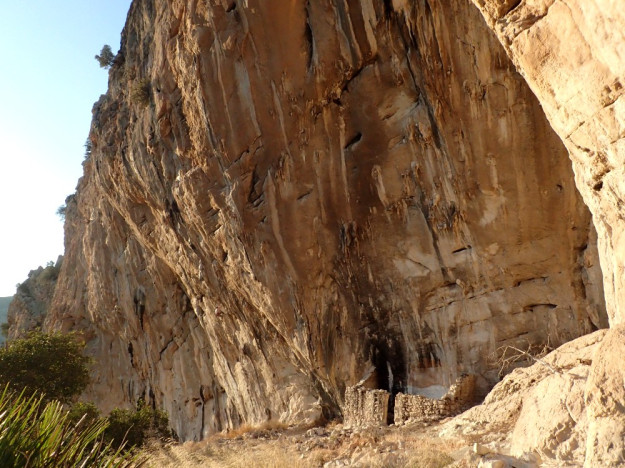
Makinodromo
We stashed our gear at the crag and settled into a rhythm. One day on, one day off. On the climbing days we’d wake up pre-dawn and get to there around 10am. After warming up, I’d have one go at my route and then just rest and belay Emily all afternoon. I’d have one more go at the end of the day, and then we’d walk out in the dark. The route was so long and pumpy that this felt like the best tactics, since I needed a lot of rest between attempts. It made for a long day out, but I didn’t mind – the route was starting to feel possible and I was pretty motivated.
I entered into that phase where you’ve worked out a sequence and you know it’s possible, but you just keep bloody falling off. Part of the problem was actually the heat. This was the middle of winter, but El Makinodromo is a sun trap and the days were often clear. I generally think that if I don’t do a hard project on my first attempt after the warm up, I probably won’t do it that day. But on the day I did it some clouds had rolled in during the afternoon. I didn’t know when we’d get these conditions again, so I gave it an all-out effort and just managed to scrape through. Which was lucky, because the crux pockets were eating my skin, and one of my fingers started spewing blood mid-crux. I’m not sure I would have been able to climb it again without taking quite a few days off for my skin to heal.
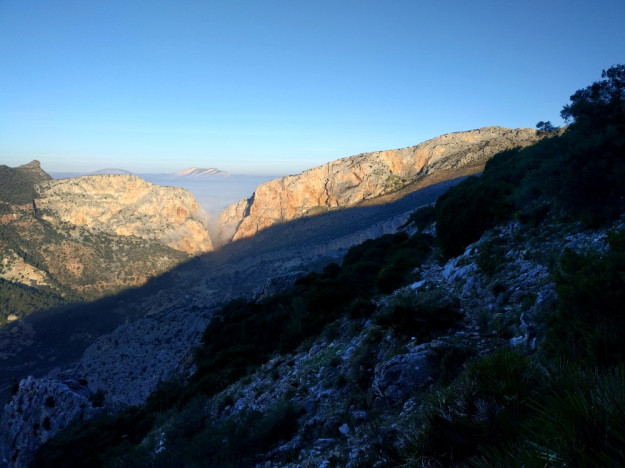
Cloud inversion on the walk in to Makinodromo
I was elated of course, but after that my psyche really seemed to disappear. Having had such a clear goal I now didn’t seem to have much of a focus. We carried on climbing in El Chorro, mainly because we were still trying to sort out getting the dent in the van repaired. We had identified a garage that could do it, but needed to wait for the insurance company to approve the quote, and then for a day when they could do all the work in a single day (since it was also our home…) All this was arranged during several trips back and forth to Álora to gesticulate with a very patient Spanish man named Luís.
It did allow the opportunity for a spontaneous party though. During our time in El Chorro we’d got friendly with the people running the bar at Finca la Campana. They had a rather enthusiastic group from a university climbing club staying there one week, and on their last night I ended up DJing for them for about 4 hours.
Finally the van was fixed and we decided what we needed was a change of scene. In Morocco, Kate had mentioned that some other friends, Katie and Alex, had visited the Jaén area and had spoken highly of it, so we thought we’d give it a go.
We headed to one of the bigger crags in the local area, which is called Reguchillo. This was partly driven by the fact that it gets a bit of sun. The weather had gotten colder again, and we were now a bit higher up, not far beneath the snow line. There’s an excellent local guidebook (in Spanish), which we bought from the climbing shop in town.
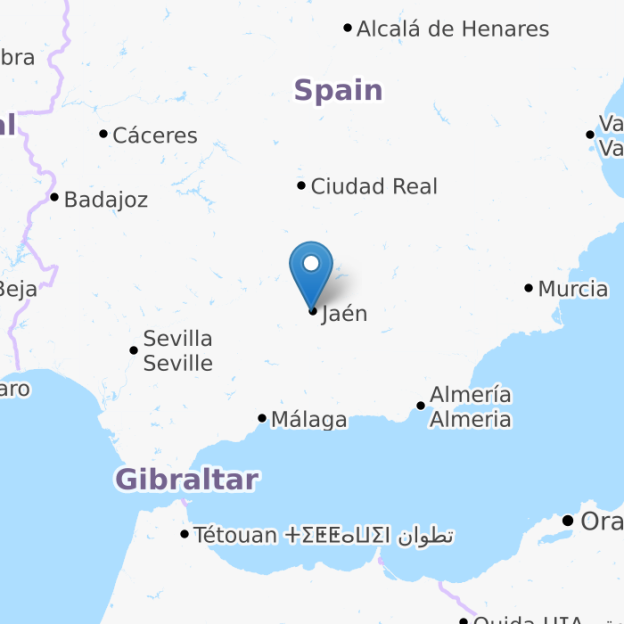
Reguchillo, Jaén
My psyche instantly returned, and I was frothing to try the climbs. I had forgotten how exciting it is to go and explore somewhere new!

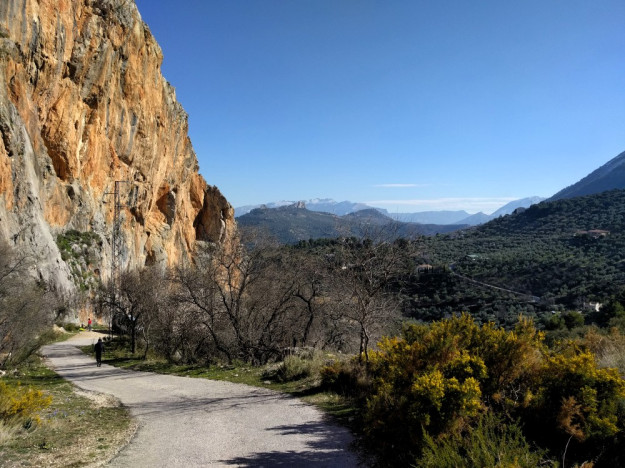
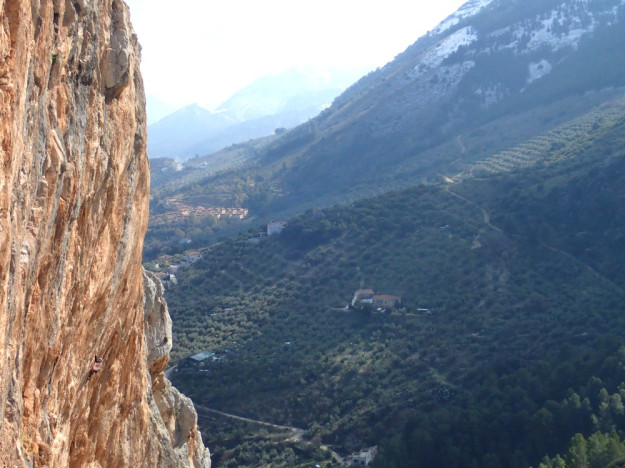
After about 10 days of excellent climbing in Reguchillo, we reluctantly started driving back north. This was a bit depressing – the trip was nearly over and the more we drove the more wintery it became. We had a brief stop in Siurana to see Marc and Itzi again, then another in Fontainebleau to meet up with some friends who were on a trip over there.
When we got to the Eurotunnel check-in at Calais, one of the staff pointed out that we had quite a bit of smoke coming out of the exhaust. They were worried about whether it would mess with the fire detection system on the train, but let us travel in the end. On the other side we weren’t sure what to do. We were worried that to carry on driving might exacerbate whatever problem we had. Unfortunately it was the absolute worst time to need to visit a garage – we arrived early evening on Saturday, so all the garages were closed until Monday morning.
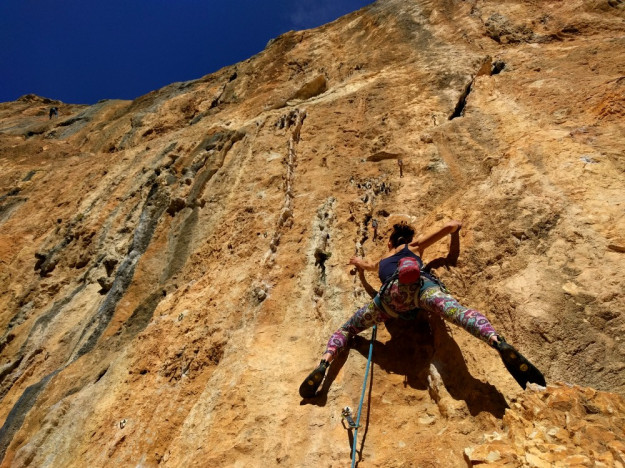
Emily starting up her proj in Reguchillo
We decided to sit tight until we could get to a garage. It felt like a depressing end to the trip as we sat in the van next to a random field back in Brexit Britain freezing our arses off while the “Beast from the East” made its final approach. When Monday did arrive we found a garage who could take a look, but it was a bit pointless really. They concluded that they didn’t really know what was going on but thought it would be OK to drive home so we decided to just crack on.
We limped back to North Wales on Tuesday, by which point it was snowing quite a lot.
Fixing the van ended up costing quite a bit and taking weeks. Glyn was a total hero, offering to help sort it all out and then sell the van, since we had to get a plane to Australia!
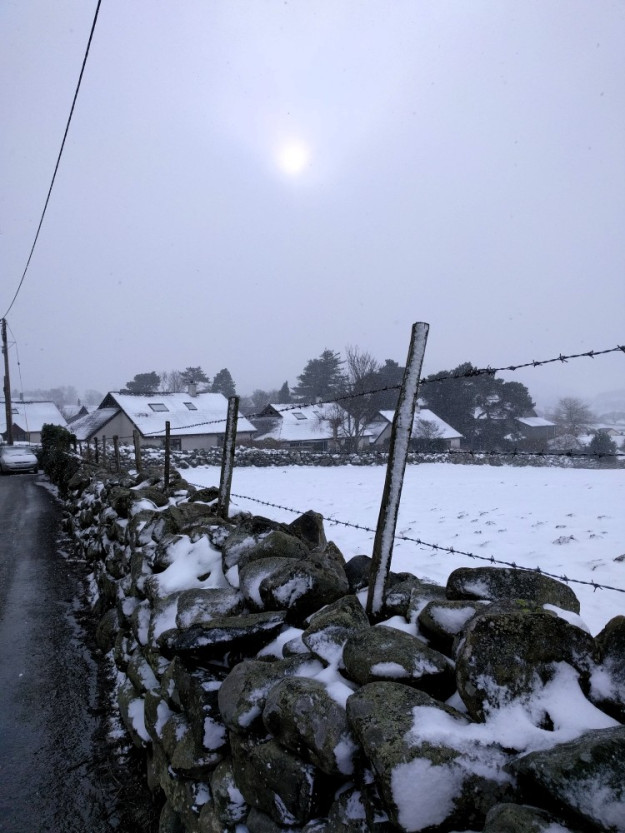
A wintry return to North Wales
So, now we’re at the bit where I try to reflect and write some sort of neat conclusion…
To be honest I never had any doubt that I’d enjoy the trip, but I think Emily was a bit more tentative about whether it was what she really wanted to spend 5 months of her life doing. So I was very grateful that she was willing to entertain the idea, and in the end we were both really into it. Given we were in each others’ faces pretty much all day every day, there was perhaps some risk that it might become a bit too much of a good thing. But instead I think it brought us closer together and the pace of life allowed us to slow down and make more time for each other.
I loved being outside and in nature literally every single day for such a stretch of time. It felt very healthy in quite a primal sense, and now I’m living in a city again I feel somewhat like a caged animal.
Obviously, doing loads of great climbing was also a highlight! I feel that I achieved a level of fitness that I’d never previously been able to reach, and it was exciting to explore what I could do with that.
I definitely hope this is not the last such trip I do, although perhaps my next one will be in an electric van? Since we came to live in Australia, Glyn has bought his own electric van and I’ve been inspired following his progress turning it into a low-carbon camper.
